

Starting Minibus Transport Business Plan (PDF)

Minibuses play a very important role in the public transport industry. Everyday millions of people use minibuses as transport to get to their destinations. Minibus public transport business is a very lucrative venture, which is highly rewarding. This article will outline how to start the minibus public transport business, and the minibus business plan – PDF, Word and Excel.
Minibus public transportation is a lucrative business, providing income for millions of people, but there are some essential decisions you need to make before you venture into the business. You have to make a decision on how many minibuses you will start with, the type of minibuses, the routes you will be operating in, and your target market. These choices will be affected by the amount of capital you have, and the opportunities available in the market. If you do not have a lot of capital, you can always start small and grow your minibus public transport business overtime.
Size is not everything in the minibus public transport industry – you do not need a large fleet in order to start up the minibus business. There are stories of people who have started a successful public transport business with nothing more than a single minibus. At the same time, the public transport business industry is diverse and rich enough to accommodate very large companies with large fleets of minibuses. Whatever option you choose; there are some critical issues that you must take into consideration as you come up with your minibus business plan.
Market Research
Formidable competition to contend with.
In many parts of the world there are affordable and reliable public transportation systems. This can be in the form of trains, and buses, amongst others; typically run by government. This is serious competition for a minibus transport business. No wonder you need to conduct market research. You have to figure out your competition i.e. government-run and private public transportation providers.
Seeking To Find A Disruptor Element
You want to know the routes they cover, their fare structures, and the type of transportation they use. People tend to be loyal to certain public transporters. Your market research is to find gaps and loopholes you can leverage on to be more appealing. After all, minibuses are not typical in many parts of the world. Thus you really have to dig deep to understand the public transport dynamics of your target market. That brings to the fore the target market.
Figuring Which Target Market Is Ideal
You want to figure which markets are worth targeting and how. It could be plying a particular route daily. It might be for companies, schools, and the like i.e. daily transportation of staff or students. You could find underserved routes and cater for them. Another niche is hiring out your minibus for intracity or intercity trips. Being able to know how exactly you must package your value proposition requires in-depth market research. Minibuses are atypical so you cannot just assume, be empirical!
Even though your business will be transporting people on the road; you still need some sort of premises for your minibus transport business. You can lease an office in the beginning of your business and then purchase your own later on. The office will have to be furnished and you have to hire employees to manage the office work. The work of the office is vital to the rest of the business. You should not treat it like a separate entity which does not need to conform to the highest standards of customer care. Instead try to ensure that you have a seamless service provision that is uniformly impressive and excellent. You also need secure premises where your minibuses will be parked when not on the road. The minibus business plan should cater for funds to purchase or lease premises.
Vehicles and Equipment
You need to purchase minibus vehicles in order to start the public transport business. The minibus vehicles can be imported from other countries where they are cheap or you can buy them locally from your country. The number and type of minibuses required will depend on the amount of capital which you have and your target market. You will also have to make a decision on whether to buy brand new minibus vehicles or second hand vehicles. When starting the business with limited capital, it maybe better to purchase used minibus vehicles. The advantage of having new minibus vehicles is that you will have lower maintenance costs and better reliability on the road.
There are several factors to take into consideration when purchasing the minibus vehicles. Some of the factors include: purchase price, fuel consumption, transmission mode (automatic vs manual), passenger capacity, model, new minibus vs used minibus. If you have limited capital, you can always start your minibus public transport business with just one vehicle. Minibus public transportation business is very profitable and if you reinvest your profits, you will be able to purchase more minibuses.
Equipment required for the minibus business include garage equipment and repair tools. The minibus drivers should always travel with basic repair tools such that if they encounter minor problems along the way, they can always fix the vehicles. The minibus business plan should include the costs of purchasing the vehicles and equipment.
Minibus Servicing And Repairs
Aim is to be always reliable and efficient.
The success of being a public transportation provider heavily depends on your efficiency and reliability. People will prefer your minibuses if they operate efficiently. Breakdowns or poor vehicle performance will put off customers. After all, people already have so many other options they can turn to. That is why you cannot afford to have minibuses that are unreliable. You have to regularly service your minibus as prescribed.
Stick To A Regular Servicing Schedule
The servicing schedule might differ depending on the type of minibus. At times it can be premised on certain mileage milestones. A general rule is that services should not be spaced by more than 10 weeks. Thus in a year, your minibus must be serviced at least 5 times. Sticking to this servicing regiment keeps the minibus operating efficiently. It helps you detect early any issues requiring attention. The need for repairs is significantly reduced or even eliminated just by regular servicing.
Inevitability Of Repairs And The Need For Professional Hands
A minibus has several moving parts – electrical, electronic, mechanical, and so on. Faults can happen which necessitate repairs. When that happens it is prudent to involve qualified and skilled professionals. Maybe you do it in-house or you engage a repairs provider. Whichever the case is, you must ensure that repairs are done professionally; no shortcuts. Improperly done repairs lead to more complications and can shorten the lifespan of the minibus. Plus your minibus transport business will be severely compromised.
Minibus Public Transport Business Insurance and Licences
One of the critical requirements that can potentially have catastrophic consequences for the public as well as the business is insurance. It is advisable to have a comprehensive insurance plan for all the minibus vehicles. The costs of comprehensive insurance are more than offset by the potential losses if you were to have an accident. As a business; the minibus business may be liable for very significant punitive damages particularly if there is a loss of life. Without adequate insurance, the minibus public transport business could be bankrupted by compensation claims.
The minibus public transport industry is regulated and the specific licences depends with the country. First of all, your drivers must be properly licensed with up to date records including health checks and driver licences. Your local council will have a list of regulatory requirements which must be diligently followed lest you lose your license to operate the minibus business. The minibus public transportation business plan should include costs for the insurance and licenses.

Staff and Management
Operations staff is a necessity for the minibus public transport business. Operations staff are responsible for handling the operations of the public transport business. They include drivers, conductors, logistics personnel, mechanics and operations manager. You will need a minibus driver as the minimum starting employee for the minibus transport business.
Finance and accounting employees are also required. For a small minibus business, the duty can be handled by the owner of the business or a part time accountant. However as the minibus public transport business grows, there will be need for full time employees who will be responsible for the finance and accounting needs of the business. Their duties will include usual day to day transaction accounting for business, managing the cash flow of the minibus public transport business, and always ensuring the enough funds are available for the day to day needs of the minibus business.
Capital for Starting Minibus Public Transport Business
The amount of capital required for starting the minibus public transport business depends on the size of the business. It all depends on what you want to achieve and the resources that you have. When starting a minibus business, most of the capital goes to acquiring the minibus vehicles. You can get a loan from the bank, or funding from investors, to use as capital to start your minibus public transport business. If you plan to raise capital from investors and a loan from the bank, you need a good minibus public transport business plan. If you don’t have access to investors and bank loan, you can use your personal savings and start small, and grow your minibus business overtime. Minibus transport business is very profitable, so if you reinvest the profits you get, you can grow over time. Even if you are not planning to get a loan, you should still get a minibus project plan to guide you in starting and operating the business. It is essential for you to have a minibus transport business plan before you venture into the minibus business, so that you know all the costs involved and you make an informed decision.
Marketing Plan
Build a solid online presence via a business website and social media accounts. Have a framework that even allows people to book online, if applicable. While you are at it, join strategic online marketplaces or business listing platforms.
Effective Branding
Branding your minibus is a sure way of grabbing people’s attention. Engage branding companies and have it colourfully and informatively branded. Find a strategic location for an office and brand it well too. Incorporate the use of banners and posters. Put signage at strategic locations so that brand awareness is spread out.
Ad Placements
You can do ad placements through strategic platforms such as radio, print media, podcasts, online content, and the like. Consider email marketing by sending promotional material about your minibus transport business to prospects.
Market for the Minibus Transport Business
The market for minibus transport is very huge. Minibuses are an affordable means of transport which are used by many people. Minibuses are used as a form of transport for both short distance routes and long distance routes. Short distance routes include routes within the same city. On the other hand long distance routes maybe from one city to the other or cross boarder routes. Minibuses can also be used for private hire by companies, organisations, schools and individuals.
Expansion Strategies
The minibus transport business is scalable through more trips or getting more minibuses. Expansion should be informed by your minibus transport business’ performance. You can notice that you are underserving the market i.e. demand is higher. There could be more untapped markets or routes. These are both opportunities for expansion. The best way to expand is by growing your fleet. Do not rush this though; roots down first, even if it is just one minibus. It is best to wait till your revenues are now substantial and consistently sustained. This will make it easier to purchase new minibuses either directly or by use of loans.
Keys To Profitability
Niche marketing.
In marketing your minibus transport business you must use niche marketing. Niche marketing refers to concerted marketing efforts specifically channelled towards a clearly-defined segment of prospects. Remember the transport industry is immensely broad. To maximize on marketing resources, time, and energy you need to speak to the right prospects. Niche marketing considers metrics such as price, income levels, quality, interests, and geographical dynamics, amongst others.
Invest In Your Staff To Differentiate You Minibus Business
One of the biggest turnoffs for customers is poor treatment from staff. This also extends to staff not being time-conscious and driving recklessly. Invest in regular staff training or up-skilling. Satisfactorily remunerate your staff so that they do their duties happily and professionally. This is pivotal in building customer loyalty and in turn, referrals. You can further cement this by offering competitive prices.
Public transportation is a lucrative but competitive market space. Downtime should be avoided by all means if your minibus transport business is to thrive. The long term goal should be to grow your fleet. If you have just one minibus, you will hit the ceiling at some point.
Pre-Written Minibus Business Plan (PDF, Word And Excel): Comprehensive Version, Short Funding/Bank Loan Version and Automated Financial Statements
For an in-depth analysis of the minibus public transport business, we encourage you to purchase our well-researched and comprehensive minibus transport business plan. We introduced the business plans after discovering that many were venturing into the minibus transport business without enough knowledge and understanding of how to run the minibus public transport business, lack of understanding of the financial side of the business, lack of understanding of : the industry, the risks involved , costs and profitability of the business; which often leads to disastrous losses.
The StartupBiz Global minibus public transport business plan will make it easier for you to launch and run your minibus transport business successfully, fully knowing what you are going into, and what’s needed to succeed in the business. It will be easier to plan and budget as you will be aware of all the costs involved in setting up and running the minibus public transport business.
Uses of the Minibus Public Transport Business Plan (PDF, Word And Excel)
The minibus transport business plan can be used for many purposes including:
- Raising capital from investors/friends/relatives
- Applying for a bank loan
- Start-up guide to launch your minibus business
- As a minibus business proposal
- Assessing profitability of the minibus transport business
- Finding a business partner
- Assessing the initial start-up costs so that you know how much to save
- Manual for current business owners to help in business and strategy formulation
Contents of the Minibus Transport Business Plan (PDF, Word And Excel)
The minibus business plan include, but not limited to:
- Marketing Strategy
- Financial Statements (monthly cash flow projections, income statements, cash flow statements, balance sheets, break even analysis, payback period analysis, start-up costs, financial graphs, revenue and expenses, Bank Loan Amortization)
- Risk Analysis
- Industry Analysis
- Market Analysis
- SWOT & PEST Analysis
- Operational Requirements
- Operational Strategy
- Why some people in the minibus transport business fail, so that you can avoid their mistakes
- Ways to raise capital to start your minibus business
The Pre-written minibus public transport business plan package consist of 4 files
- Minibus Business Plan – PDF file (Comprehensive Version – 65 Pages)
- Minibus Transport Business Plan – Editable Word File (Comprehensive Version – 65 Pages)
- Minibus Business Plan Funding/Bank Loan Version- Editable Word File (Short version for applying for a loan/funding – 40 pages)
- Minibus Transport Business Plan Automated Financial Statements – (Editable Excel File)
The business plan can be used in any country and can be easily edited. The financial statements are automated. This implies that you can change eg the number of minibuses, number of trips per day etc, and all the other financial statements will automatically adjust to reflect the change.
Click below to download the Contents Page of the Minibus Public Transport Business Plan (PDF)

Testimonial 6
I purchased a business plan from you, and I’m glad to inform you that I was able to get my loan, and I’m starting my poultry farming business on the 1 st of July. This was made possible because of your business plan. Thank you very much, you made my dream come true.
Testimonial 8
Just wanted to say I am very happy with the business plan and I will gladly recommend your products, thank you very much and have a great day.
Testimonial 5
I was able to understand the business side of farming because of your business plan. You did extensive research; the business plan was well prepared and fully detailed. It made everything clear, and I have somewhere to start now. I am confident that I am going to succeed in my business because of the guidance from your business plan.
Testimonial 3
I was extremely lucky to come across StartupBiz Global. Their business plan exceeded my expectations, and most importantly I was able to secure a loan from my bank. Thank you guys, now my dreams are coming true!
Testimonial 7
I found Startupbiz Global online when I was in desperate need of a business plan. I was overwhelmed by the quality of the business plan, it’s comprehensive and well researched! I did not have to wait to get the business plan, I got it instantly after payment. I highly recommend Startupbiz Global, and would happily use them again in the future.
Testimonial 2
Many thanks for your incredibly efficient service and thorough business plan. I am very impressed with the business plan. Before I bought the business plan, I tried to do my own business plan – it was such a nightmare and it turned out badly, also not to mention the stress it caused me. I wish I knew about your website earlier!
Testimonial 4
The business plan which I purchased from your website saved me TIME and MONEY! The layout of the business plan was excellent. The financial statements were detailed and easy for me to edit. I will come back to purchase another business plan soon.
Testimonial 1
StartupBiz Global provided a very professional and comprehensive business plan which I used for my business. The business plan was easy to edit, and I was able to get the funding which I wanted. I highly recommend their business plans.
Get the Minibus Business Plan (PDF, Word And Excel)
Click Buy Now below to purchase using Paypal, Credit Card, or Debit Card. After you have purchased, you will immediately see the download link for the business plan package on the screen. You will also immediately get an email with the business plan download link. The Pre-written business plan package (PDF, Word, and Excel) costs $30 only!

If you want to purchase multiple business plans at once then click here: Business Plans Store.
The business plan package is a zipped compressed file containing the PDF, Word and Excel documents. To open the package after downloading it, just right click, and select Extract All. If you have any problems in downloading and opening the files, email us on [email protected] and we will assist you.
We wish you the best in your minibus business! Check out our collection of business plans , and more business ideas .
Related Posts

Starting Recycling Business Plan (PDF)

Starting an ECD Day Care Centre Business Plan (PDF)

Profitable Livestock Farming Business Ideas

Starting Pig Farming Business Plan (PDF)

Join our mailing list to receive the latest posts and updates from our website.
You have Successfully Subscribed!

Item added to your cart
Here is a free business plan sample for a transportation company.

If the open road calls to you and you envision starting your own transportation company, you've navigated to the perfect starting point.
In the content that follows, we will steer you through a comprehensive sample business plan tailored for a transportation enterprise.
As an aspiring entrepreneur, you're likely aware that a robust business plan is the roadmap to success, guiding you to establish your objectives, strategies, and financial projections.
To shift your planning into high gear with ease and precision, you can utilize our transportation company business plan template. Our specialists are also on standby to provide a complimentary review and refinement of your plan.

How to draft a great business plan for your transportation company?
A good business plan for a transportation company must reflect the unique challenges and opportunities of the logistics and transport industry.
To start, it is crucial to provide a comprehensive overview of the transportation market. This includes current statistics and the identification of emerging trends within the industry, as illustrated in our transportation business plan template .
Your business plan should clearly articulate your vision, define your target market (such as local businesses, international shippers, or e-commerce platforms), and describe your company's unique value proposition (like expedited shipping, specialized vehicle fleets, or cost-effective solutions).
Market analysis is a key component. This section should delve into the competitive landscape, regulatory environment, potential partnerships, and customer needs and expectations.
For a transportation company, it is vital to detail the services you plan to provide. This could include freight shipping, passenger transport, logistics services, or last-mile delivery. Explain how these services will meet the demands of your intended customer base.
The operational plan is critical. It should outline the logistics of your operations, including fleet management, routing and scheduling, maintenance protocols, technology use (such as GPS tracking or transportation management systems), and staffing requirements.
Quality control, adherence to transportation regulations, safety standards, and environmental considerations are also important aspects to emphasize for a transportation business.
Discuss your marketing and sales strategies. How will you build your client base and maintain customer relationships? Consider your approach to sales, pricing strategies, and the role of customer service.
Incorporating digital strategies, such as a professional website, online booking systems, and a social media presence, is increasingly important for modern transportation companies.
The financial section is another cornerstone of the plan. It should include your startup costs, revenue projections, operational expenses, and the point at which you expect to break even.
Transportation companies often deal with significant overhead costs, so precise financial planning and understanding your cash flow is essential. For assistance, refer to our financial forecast for a transportation company .
Compared to other business plans, a transportation company's plan must pay special attention to vehicle acquisition and maintenance, fuel cost management, insurance, and compliance with transportation laws and regulations.
A well-crafted business plan will not only help you clarify your strategy and operational approach but also serve as a tool to attract investors or secure loans.
Lenders and investors are looking for thorough market research, realistic financial projections, and a clear plan for day-to-day operations.
By presenting a detailed and substantiated business plan, you showcase your professionalism and dedication to the success of your transportation company.
To achieve these goals while saving time, you can start with our transportation business plan template .

A free example of business plan for a transportation company
Here, we will provide a concise and illustrative example of a business plan for a specific project.
This example aims to provide an overview of the essential components of a business plan. It is important to note that this version is only a summary. As it stands, this business plan is not sufficiently developed to support a profitability strategy or convince a bank to provide financing.
To be effective, the business plan should be significantly more detailed, including up-to-date market data, more persuasive arguments, a thorough market study, a three-year action plan, as well as detailed financial tables such as a projected income statement, projected balance sheet, cash flow budget, and break-even analysis.
All these elements have been thoroughly included by our experts in the business plan template they have designed for a transportation company .
Here, we will follow the same structure as in our business plan template.

Market Opportunity
Market data and figures.
The transportation industry is a critical component of global commerce and is experiencing significant growth.
Recent estimates value the global transportation market at approximately 7 trillion dollars, with expectations for continued expansion due to the rise in e-commerce, global trade, and technological advancements in logistics and supply chain management.
In the United States alone, there are over 500,000 transportation businesses, contributing to an annual revenue of over 1 trillion dollars for the sector.
These statistics underscore the pivotal role of transportation companies in supporting economic activity and facilitating the movement of goods across the country and internationally.
The transportation sector is witnessing several key trends that are shaping its future.
Electrification and alternative fuels are gaining traction as the industry seeks to reduce its carbon footprint and comply with environmental regulations. Electric trucks, ships, and planes are being developed and deployed to meet these goals.
Autonomous vehicles and drones are also on the rise, promising to revolutionize delivery services and enhance efficiency in logistics.
Digital transformation is another significant trend, with the integration of Internet of Things (IoT) devices, advanced tracking systems, and blockchain technology improving transparency and real-time data access.
Additionally, the demand for last-mile delivery services is surging, driven by online shopping and consumer expectations for faster delivery times.
These trends indicate a dynamic evolution in the transportation industry, with companies investing in innovation to stay competitive and meet the evolving needs of the market.
Success Factors
Several factors contribute to the success of a transportation company.
Efficiency in operations is paramount. Companies that can optimize routes, reduce transit times, and manage costs effectively are more likely to succeed.
Reliability and safety are also critical, as customers depend on timely and secure delivery of their goods.
Strategic location of hubs and networks can greatly influence a company's ability to provide comprehensive service coverage and quick response times.
Customer service excellence is essential for building trust and loyalty, especially when handling customer inquiries and resolving issues promptly.
Lastly, the ability to adapt to industry changes, such as implementing sustainable practices and embracing technological innovations, is crucial for long-term viability in the transportation sector.
The Project
Project presentation.
Our transportation company project is designed to address the increasing need for reliable, efficient, and eco-friendly transportation solutions. Strategically located to serve urban centers, business districts, and residential areas, our company will offer a diverse fleet of vehicles, including electric cars, hybrid buses, and cargo vans, all equipped with the latest technology to ensure safety and comfort.
We will prioritize punctuality, customer service, and adaptability to cater to various transportation needs, from daily commutes to corporate logistics.
Our transportation company aims to set a new standard in the industry, focusing on sustainability and customer satisfaction, and becoming a go-to provider for modern, environmentally-conscious travelers and businesses.
Value Proposition
The value proposition of our transportation company is centered on delivering top-tier transportation services that are both eco-friendly and customer-oriented.
Our commitment to using green technology and reducing carbon emissions offers a responsible choice for those who are environmentally conscious, without compromising on efficiency or convenience.
We are dedicated to enhancing the transportation experience by offering a range of services tailored to individual and corporate needs, ensuring that every journey is smooth, timely, and comfortable.
Our transportation company is poised to become a cornerstone in the community, providing a sustainable alternative to traditional transportation methods and contributing to the betterment of our environment and the quality of life of our customers.
Project Owner
The project owner is a seasoned professional with extensive experience in the transportation and logistics industry.
Armed with a deep understanding of the challenges and opportunities in modern transportation, they are committed to launching a company that stands out for its dedication to sustainability, customer satisfaction, and innovation.
With a strategic vision for reducing environmental impact and a commitment to leveraging cutting-edge technology, they are determined to offer a service that not only meets the demands of today's market but also anticipates the needs of tomorrow's world.
Their passion for excellence and their expertise in transportation make them the driving force behind this project, aiming to revolutionize the way we think about travel and logistics in an eco-friendly and customer-centric manner.
The Market Study
Market segments.
The market segments for this transportation company are diverse and cater to various customer needs.
Firstly, there are corporate clients who require reliable and professional transportation services for their employees, clients, or goods.
Secondly, individual customers seeking convenient and efficient personal transport solutions, such as airport transfers or private car services.
Another segment includes businesses that need logistics support, including freight and cargo services for their supply chain operations.
Lastly, the tourism sector can be a significant market, with services tailored to tourists needing guided tours, shuttle services, or chartered trips.
SWOT Analysis
A SWOT analysis of this transportation company project highlights several key factors.
Strengths include a diverse fleet of vehicles, experienced drivers, and a strong reputation for reliability and customer service.
Weaknesses might involve the high operational costs of vehicle maintenance and fuel, as well as the need for continuous investment in fleet upgrades.
Opportunities can be found in the expansion of services to new markets, the adoption of green technologies, and partnerships with local businesses and tourism agencies.
Threats may include fluctuating fuel prices, regulatory changes, and intense competition from both traditional and app-based transportation services.
Competitor Analysis
Competitor analysis in the transportation sector shows a highly competitive landscape.
Direct competitors range from other local transportation companies to international logistics firms and ride-sharing services.
These competitors vie for market share by offering various services, pricing models, and customer experiences.
Potential competitive advantages include strategic partnerships, specialized services, a modern and eco-friendly fleet, and a strong customer loyalty program.
Understanding the competitive environment is crucial for carving out a niche and offering services that distinguish the company from its competitors.
Competitive Advantages
Our transportation company's competitive edge lies in our commitment to safety, punctuality, and customer satisfaction.
We maintain a modern fleet with a range of vehicle options to suit different client needs, from luxury sedans to spacious cargo trucks.
Our investment in technology, such as real-time tracking and efficient routing systems, ensures a seamless experience for our customers.
Additionally, our dedication to sustainable practices, like using fuel-efficient vehicles and exploring electric options, positions us as a forward-thinking leader in the industry.
We value clear communication and transparency with our clients, which fosters trust and long-term business relationships.
You can also read our articles about: - how to start a transportation company: a complete guide - the customer segments of a transportation company - the competition study for a transportation company
The Strategy
Development plan.
Our three-year development plan for the transportation company is designed to be robust and responsive to market demands.
In the first year, we will concentrate on building a solid foundation by establishing a reliable fleet, optimizing routes, and enhancing customer service to grow our local and regional client base.
The second year will focus on expanding our services to include additional logistics solutions and entering new markets, potentially through strategic partnerships or acquisitions.
In the third year, we aim to solidify our presence in the industry by investing in technology such as fleet tracking and management systems, and exploring eco-friendly transportation options to reduce our carbon footprint.
Throughout this period, we will prioritize safety, efficiency, and customer satisfaction to become a leader in the transportation sector.
Business Model Canvas
The Business Model Canvas for our transportation company targets businesses in need of reliable logistics services, as well as individuals requiring personal transport solutions.
Our value proposition is centered on timely and secure delivery, competitive pricing, and exceptional customer service.
We offer our services through direct contracts, our company website, and partnerships with businesses in related industries.
Key resources include our modern fleet of vehicles, logistics software, and a professional team of drivers and support staff.
Our main activities involve route planning, vehicle maintenance, and customer support.
Revenue streams are generated from service fees for transportation and logistics services, while our costs are associated with vehicle maintenance, fuel, staff salaries, and technology investments.
Access a complete and editable real Business Model Canvas in our business plan template .
Marketing Strategy
Our marketing strategy is focused on building a strong brand reputation for reliability and efficiency.
We plan to engage with businesses through networking events, trade shows, and direct outreach to showcase our services.
For individual customers, we will leverage online marketing, social media campaigns, and referral programs.
We will also explore partnerships with companies in complementary industries to offer integrated logistics solutions.
Our commitment to sustainability and the use of advanced technology will be highlighted to differentiate us from competitors.
Risk Policy
The risk policy for our transportation company is designed to mitigate risks associated with vehicle operation, regulatory compliance, and market fluctuations.
We will implement rigorous maintenance schedules for our fleet, adhere to all transportation laws and regulations, and continuously train our staff to ensure the highest safety standards.
Our financial risk will be managed through careful budgeting, cost control, and diversification of our customer base.
We will also carry comprehensive insurance to protect against potential liabilities related to our transportation services.
Our focus is on delivering dependable transportation solutions while safeguarding the well-being of our customers and employees.
Why Our Project is Viable
We are committed to establishing a transportation company that meets the evolving needs of the market.
With our focus on customer service, operational excellence, and strategic growth, we are poised to capture significant market share.
We are enthusiastic about the opportunity to facilitate commerce and mobility, contributing positively to the economy and society.
We remain adaptable to industry trends and customer feedback, ensuring the long-term viability and success of our transportation business.
You can also read our articles about: - the Business Model Canvas of a transportation company - the marketing strategy for a transportation company
The Financial Plan
Of course, the text presented below is far from sufficient to serve as a solid and credible financial analysis for a bank or potential investor. They expect specific numbers, financial statements, and charts demonstrating the profitability of your project.
All these elements are available in our business plan template for a transportation company and our financial plan for a transportation company .
Initial expenses for our transportation company include acquiring a fleet of reliable vehicles, obtaining the necessary licenses and permits, investing in logistics software to optimize routes and track deliveries, training drivers and logistics staff, as well as costs related to brand creation and launching targeted marketing campaigns to establish our presence in the market.
Our revenue assumptions are based on a thorough analysis of the local and regional demand for transportation services, considering the economic growth and the need for efficient logistics solutions.
We anticipate progressively increasing sales, starting modestly and growing as the reputation of our transportation company strengthens.
The projected income statement indicates expected revenues from our transportation services, operational costs (vehicle maintenance, fuel, driver wages, insurance), and operating expenses (office rent, marketing, administrative salaries, etc.).
This results in a forecasted net profit crucial for evaluating the profitability of our business over time.
The projected balance sheet reflects assets specific to our business, such as our vehicle fleet, maintenance equipment, and liabilities including loans and anticipated expenses.
It shows the overall financial health of our transportation company at the end of each period.
Our projected cash flow budget details incoming and outgoing cash flows, allowing us to anticipate our cash needs at any given time. This will help us effectively manage our finances and avoid cash flow problems.
The projected financing plan lists the specific financing sources we plan to use to cover our startup expenses.
The working capital requirement for our transportation company will be closely monitored to ensure we have the necessary liquidity to finance our daily operations, including fuel purchases, vehicle maintenance, and salary payments.
The break-even point specific to our project is the level of sales needed to cover all our costs, including startup expenses, and start making a profit.
It will indicate when our business will be profitable.
Performance indicators we will track include the profit margin rate on our transportation services, the asset turnover ratio to assess the efficiency of our fleet utilization, and the return on investment to measure the effectiveness of the capital invested in the project.
These indicators will help us evaluate the financial health and overall success of our transportation company.
If you want to know more about the financial analysis of this type of activity, please read our article about the financial plan for a transportation company .
- Choosing a selection results in a full page refresh.
- Opens in a new window.
13+ SAMPLE Transportation Business Plan in PDF | MS Word
Transportation business plan | ms word, 13+ sample transportation business plan, what is a transportation business plan, advantages of a good public transport, types of transportation business, how to start a transport business plan, is the transportation business profitable, is doing business risky, who can decide and oversee public transportation.
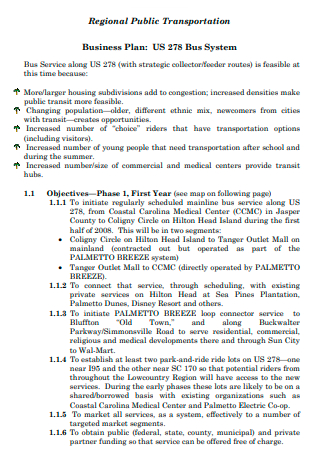
Regional Public Transportation Business Plan
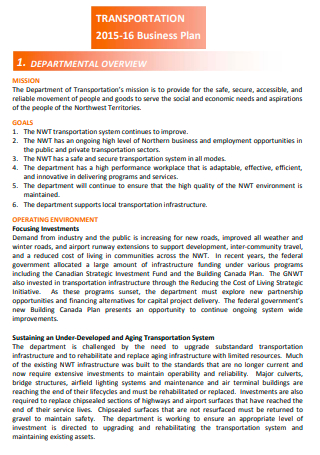
Transportation Business Plan Example
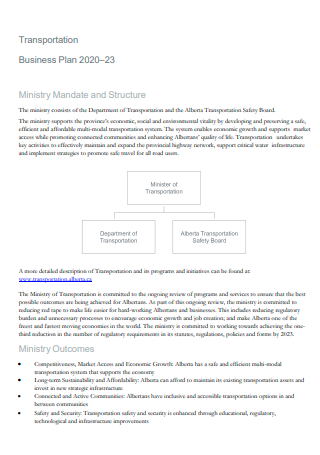
Printable Transportation Business Plan
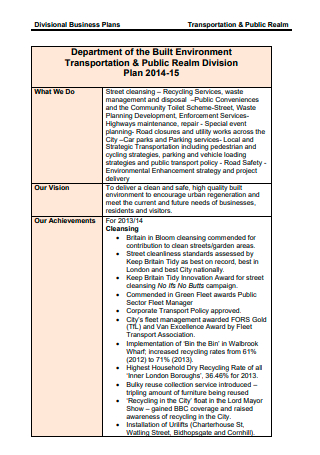
Transportation Divisional Business Plan
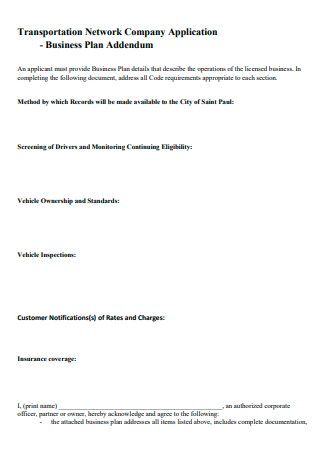
Transportation Network Company Application Business Plan
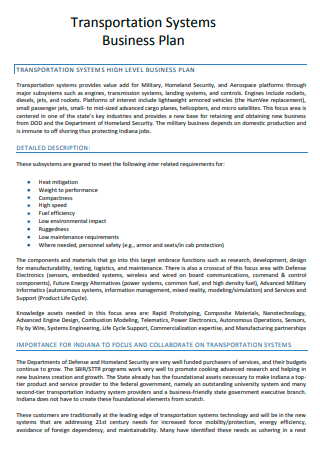
Transportation Business Plan in PDF
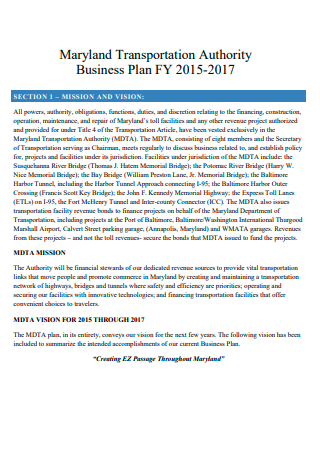
Transportation Authority Business Plan
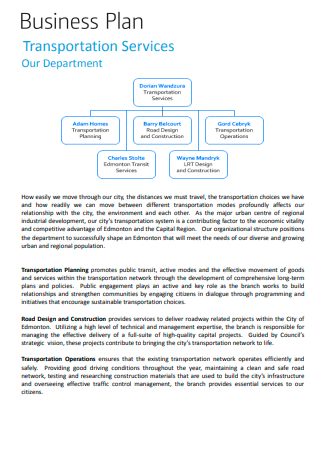
Transportation Services Business Plan
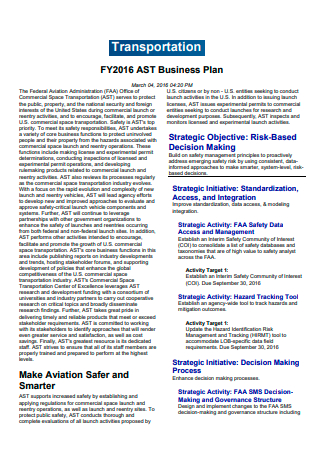
Basic Transportation Business Plan
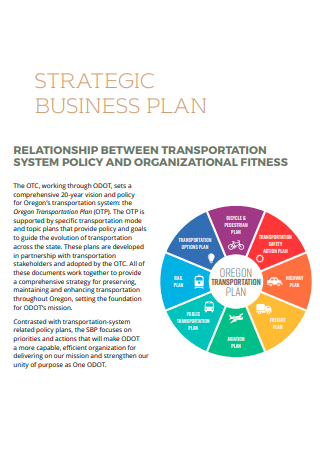
Transportation Strategic Business Plan
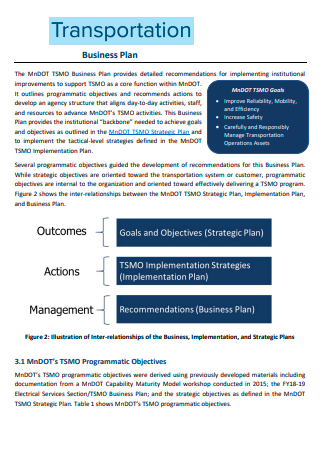
Standard Transportation Business Plan
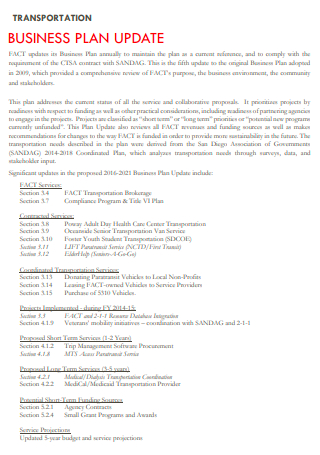
Transportation Business Plan Update

Transportation Business Plan Format

Transportation Business Plan in DOC
Tip 1: determine the goals., tip 2: explain your services and company., tip 3: determine the projected budget., tip 4: smoothen out the logistics., share this post on your network, you may also like these articles.

In this comprehensive guide, we explore the essentials of creating an effective Floor Plan. Whether you are designing a new home, renovating an existing space, or planning an office…
Nursing Care Plan

In this comprehensive guide, we explore the essentials of creating an effective Nursing Care Plan. Whether you are a nursing student, a new graduate, or an experienced nurse, this…
browse by categories
- Questionnaire
- Description
- Reconciliation
- Certificate
- Spreadsheet
Information
- privacy policy
- Terms & Conditions
- Credit cards
- View all credit cards
- Banking guide
- Loans guide
- Insurance guide
- Personal finance
- View all personal finance
- Small business
- Small business guide
- View all taxes
You’re our first priority. Every time.
We believe everyone should be able to make financial decisions with confidence. And while our site doesn’t feature every company or financial product available on the market, we’re proud that the guidance we offer, the information we provide and the tools we create are objective, independent, straightforward — and free.
So how do we make money? Our partners compensate us. This may influence which products we review and write about (and where those products appear on the site), but it in no way affects our recommendations or advice, which are grounded in thousands of hours of research. Our partners cannot pay us to guarantee favorable reviews of their products or services. Here is a list of our partners .
How to Start a Transportation Business: The Ultimate Guide

Nina Godlewski helps make complicated business topics more accessible for small business owners. She covers small business topics such as payroll management and launching a business. She was previously a staff writer at Newsweek covering technology, science, breaking news, and culture. She has also worked as a reporter for Business Insider and The Boston Globe.

Christine Aebischer is an assistant assigning editor on the small-business team at NerdWallet who has covered business and personal finance for nearly a decade. Previously, she was an editor at Fundera, where she developed service-driven content on topics such as business lending, software and insurance. She has also held editing roles at LearnVest, a personal finance startup, and its parent company, Northwestern Mutual. She is based in Santa Monica, California.
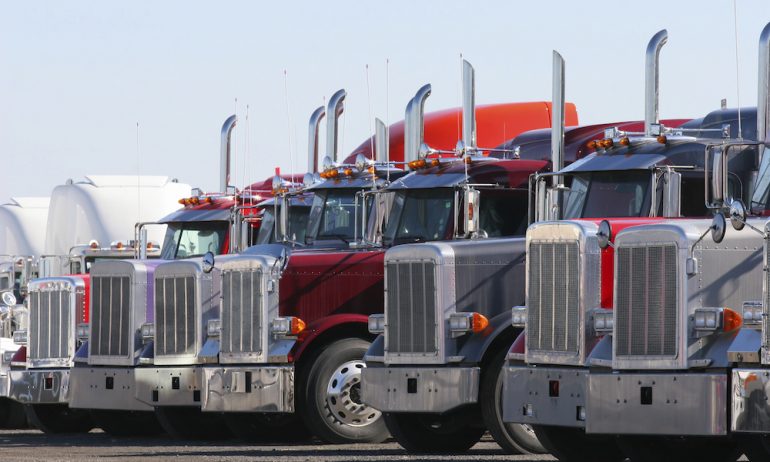
Many or all of the products featured here are from our partners who compensate us. This influences which products we write about and where and how the product appears on a page. However, this does not influence our evaluations. Our opinions are our own. Here is a list of our partners and here's how we make money .
The transportation business touches far more of our lives than we notice. When you think of transportation businesses, you might think specifically about taxi companies or car rentals, but there are so many other options that you might not be considering. Any time you’ve rented a car, bike, or limousine you’ve interacted with a transportation business. There are also other businesses like shipping, transportation services for seniors, taxi services, and more.
If you’re wondering how to start a transportation business, first consider all of the possibilities. Our guide to starting a transportation business can help you define what a transportation business is and will go over everything you need to start a transportation business of your own. It takes a lot of planning, but you can successfully start a business if you’re ready to dedicate time to it.

How to start a transportation business in 8 steps
A transportation business is basically any business that has a hand in transporting people or goods. It can also have to do with providing transportation for other business owners who need help linking their product to their actual business.
These possibilities lead right into step one of how to start a transportation business: choosing the type of transportation business you want to start.
1. Choose the type of transportation business to start
As we mentioned above there are so many kinds of transportation businesses out there for you to choose from to start. You might consider what vehicles you already have at your disposal or what the market you plan to operate in is currently lacking.
Your options for transportation businesses to start include, but are not limited to:
Taxi company.
Senior transportation.
Limousine rentals.
Car rentals.
Bike rentals.
Moving van rental or moving company.
Medical transportation.
These are the basic types, but there are also emerging markets for things like scooter rentals, along with more traditional ones like school bus companies. You might already have an idea of which type of transportation business you want to start.
If not, though, a key part in your journey to starting a transportation business will be doing some research into which transportation type is most in-demand in your area. You can do this research by conducting a market survey, examining possible competition, or checking in with locals in the area you want to start your transportation business in. This will come in handy when it’s time to write up a business plan for your company.
2. Choose a name and entity for your transportation business
The entity you choose might influence your business name, so you might want to choose the entity first. For a transportation business, some entities might make more sense than others. A limited liability company or a limited liability partnership might be good due to the fact that it would shield the partners from personal liability.
Your options for business entities include:
Sole proprietorship : This is an unincorporated business that is owned by one person or owned by a married couple. This is the most common type of business entity in the United States, but it does leave you open to personal liability when it comes to debts and lawsuits, so it might not be best for a transportation business. If you choose to open your transportation business as a sole proprietorship, then the business will have your name as the business name, unless you file a DBA, or "doing business as."
Limited liability partnership: This partnership is an entity that protects the partners involved from personal liability and the debts and obligations of the business. They’re also shielded from the actions of other partners in the business. Limited liability partnerships differ from a general partnership where the partners manage the business equally and take on those liabilities and obligations equally as well.
Limited liability company: On the other hand, an LLC is a business entity that means owners aren’t personally liable for the business’s debts or obligations. They are a bit more flexible than the LLP option and the LLC can choose to be taxed as a corporation or not.
Once you choose your business entity, you also need to choose a business name when starting a transportation business. If you decide to start your business as a sole proprietorship you may need to get a DBA. This is a name your business uses when it operates under a name other than your own, or the name that the business is legally registered as.
In most states, you can look up businesses that are already in existence there, and see if the name you want for your business is available for you to use. Usually, the Secretary of State’s office will have a registry you can search. You can also check the U.S. Patent and Trademark Office. You’ll want to see if the domain name for your desired business name is also available before finalizing your name.
How much do you need?
with Fundera by NerdWallet
We’ll start with a brief questionnaire to better understand the unique needs of your business.
Once we uncover your personalized matches, our team will consult you on the process moving forward.
3. Write a business plan
This step involves some of the heaviest legwork and the most research, but it’s how you’ll get a very clear vision of your new business. There’s a lot that goes into writing a business plan, but it will be well worth it once you’ve finished. A lot of the puzzle pieces surrounding how to start a transportation business will come together in this stage. The research you do for your business plan will help you prepare your transportation business for success, plus you can use it later on when you approach banks or investors about possible loans or investments into the business.
You can either come up with your business plan on your own or you can use a business plan template. No matter what you use to make your business plan, make sure it includes:
An overview of the business.
Market analysis.
Pricing plan.
Marketing plan.
Financial plan and projections.
Remember what we said about research? If you’re starting a transportation business, you need to make sure that there’s actually a demand for it before you start operations. If there’s no demand your business will not make it very long.
This research into demand is part of strong market analysis, along with research into what other businesses in the area are doing similar work and providing similar services. Through market analysis, you can identify pain points with competitors or gaps in the market, jumpstarting your success.
4. Register your transportation business and get an EIN
Now that you have the name chosen for your business, you have to register the business with that name so that it’s reserved. This is also when you’ll trademark the name if you need to, which can be done with the United States Patent and Trademark Office.
To register your transportation business, you’ll likely have to visit the website for the Secretary of State’s office in the state you plan to operate your business from. That site should lead you to the business bureau or the business agency in your state, where you’ll find information on the specific paperwork you’ll need to submit to them. While some states allow businesses to register online, not all do, so be sure to check whether your state requires you file paper documents with them.
Some of the documents you’re required to file may vary depending on the business entity you chose. Typically, you’ll need to submit a form for your business entity, pay a fee, and — in some cases — publish a notice in the local paper. You may also have to file paperwork with the town or county you wish to operate out of as well.
You’ll use your newly registered business name to apply for an employer identification number or EIN. This is one of the easier processes you’ll have to go through when starting a transportation business. There are many benefits to getting an EIN, like making it easier to file taxes, identity theft prevention and it can help you establish your business credit.
Applying online for an EIN is quick and simple. Usually, within a few minutes, you can get your EIN right from the IRS free of charge and then use that EIN to register to pay your federal and state taxes.

Start Your Dream Business
5. Get licenses and permits
When starting a transportation business, there are bound to be more business licenses and permits required than if you were opening something like a boutique or a coffee shop. When you open a transportation business you’re taking on responsibility for people or for the items you're transporting and the regulations around that can be more in-depth than they are for other things.
The SBA has a list of the issuing agencies for certain businesses that transport things via plane, ocean and more. For state licenses and permits, you have to check with your specific state and municipality. The registration requirements are highly dependent on the county your business will be operating in and its activities, according to the SBA.
For example, if you’ll be driving tractor trailers or other large vehicles, you’ll need a commercial driver’s license, as will any drivers you employee who will drive such vehicles, along with a commercial vehicle registration. These must be obtained through your home state. But there might be unforeseen registrations. The Department of Revenue in Kansas, for instance, has their own resource page for trucking companies , where they discuss requirements like a liquid-fuel carrier’s license, the International Fuel Tax Agreement and trip permits.
You might want to consult a lawyer in your specific industry to make sure you’re following all rules and regulations, that you’re completing the proper registrations, and that you’re getting the right licenses. They vary by state and by specific industry, so you want to be sure you’ve covered all your bases.
6. Open a business checking account and get a business credit card
A business checking account and a business credit card are the next step when it comes to how to start a transportation business. You want to have both of these things to help keep your business’s cash and credit completely separate from your personal finances.
Getting a business credit card can also act as a form of funding early on if you’re having a hard time getting a loan. Paying off your credit card on time — or early if you’re able to — can help boost your business credit and make you a better candidate for a loan when the time comes. Sometimes they even come with perks that can help your business. For example, there are some business credit cards, known as fuel cards, that are especially useful for truckers.
Having a business checking account as well can help you keep your finances separate and help you establish your credit further. Keeping your business money in and out of one account, that isn’t linked with your personal account, can be very helpful when it comes to things like filing taxes, applying for loans, or figuring out your monthly overhead, costs, and revenue.
The best checking account for your business will vary depending on your specific business needs and the type of transportation business you’re starting. For example, the best banks for truckers, who need a lot of flexibility, won’t necessarily be the best bank for a school bus operation that stays relatively local.
Some accounts, like the Chase business checking accounts, offer you a bonus when you sign up, and the ability to waive the monthly service fee. Other banks offer a high number of transactions per month if your business has a high volume of transactions or offer integrations with accounting software. Choosing the right one comes down to what your business needs and what type and how many transactions you’re processing.
7. Get any funding you need
Starting a transportation business isn’t a cheap venture. You’ll likely need to be investing in equipment, aka vehicles, for the business which can cost a lot up front, even if you decide to rent. These costs are inevitable and you’ll have to spend some money to start making money.
So you’ll probably be needing some financing as well. There are plenty of financing options luckily. As a small business that’s new, you might have a hard time finding lenders but that doesn’t mean you shouldn’t try.
There are grants, loans, funding and more available as startup funding to new business owners. You might even decide that your new business credit card can help you get started depending on your credit limit. Your other options for startup business loans include SBA microloans, small-business grants , family and friends, personal loans and crowdfunding.
8. Hire any employees you need
You’re probably going to need employees if you’re planning on transporting anything on any sort of scale other than small one-time trips that you can handle yourself. If so, you’ll have to find those employees and make sure they’re the right fit for your new business.
Some signs that it’s the right time to hire your first employee include having to turn down work because you can’t do it all on your own, never being able to take a break, and needing someone with skills that you don’t already have.
Once you know you definitely need to hire an employee, make sure you’ve got an EIN and your taxes are in order. Then you can move on to the part of hiring your first employee that involves writing the job description and interviewing and hiring candidates.
You should make sure your candidates have the training and the licenses they need to work for your business. You might also want to check their references to make sure they’re reliable and good employees and will be a valuable addition to your new business.
Don’t rush into hiring. If you don’t need any employees, don’t hire just because you think your business should be more than one person. You’ll be able to tell when the time is right and should take some time to vet candidates and make sure they have the correct skills before offering them a position.
Keep in mind that when you hire someone, you’ll also have to provide benefits, deal with payroll taxes, adjust your budget to reflect salaries and more.

Transportation Business Plans
Written by Dave Lavinsky

Our detailed collection of transportation industry business plan examples are tailored for logistics coordinators, fleet managers, and transportation entrepreneurs. These professional business plans encompass a wide spectrum of transportation services, including freight, passenger transit, and niche transport solutions. Each plan provides a structured approach to market analysis, operational logistics, compliance with regulatory standards, and financial management. These strategic blueprints are essential for industry professionals committed to navigating the complexities of transportation logistics, optimizing supply chain efficiency, and driving sustainable business growth in a sector that is the backbone of global commerce.
Transportation Business Plan Templates
Box Truck Business Plan Template
Hotshot Trucking Business Plan Template
Charter Boat Business Plan Template
Dump Truck Business Plan Template
Freight Broker Business Plan Template
Gas Station Business Plan Template
Import Export Business Plan Template
Logistics Business Plan Template
RV Park Business Plan Template
Self-service Car Wash Business Plan
Tow Truck Business Plan Template
Trucking Business Plan Template
%20(2).webp)
The Step By Step Guide: How To Start Your Own Business
.png)
How To Start A Passenger Transportation Business
To establish a transportation company, you must first select what company you want to launch. Taxis, bike rentals, limousine services, owner/operator trucking, moving companies, specialty transportation services, cattle transportation, boat transport, air transport, maritime shipping, medical transport, and senior transportation are all options.
The sort of business you start should be influenced by many factors including the demand and competition in the field you choose to operate in.
Once you have decided what you want to transport, you will need to formulate a strategy for delivering these services.
What is Passenger Transportation Business?
Businesses that transfer products or persons from one point to another are transportation businesses. Individual travelers, other businesses, and worldwide trade partners can benefit from their services.
Individual ridesharing services, consumer goods carrying, and worldwide delivery of supplies and products are all possibilities for a transportation company.
A transportation company often classifies through the customer base it serves or the type of routine service it provides.
How to Start a Passenger Transportation Business?
When you are thinking about establishing a transportation company, keep in mind what you will need to learn, research, and earn before you get started.
It is critical to prioritize laying a solid foundation since ignoring any of these crucial parts might lead to stress later. There are some steps to starting a transportation service firm listed below.
Create Your Business Plan
Before you start writing a passenger transportation business plan, make sure you know everything there is to know about the sector.
Buses, taxis, and airport shuttles are only a tiny part of the transportation service sector. You can also create a passenger service using ferryboats, cruises, limos, and other modes of transportation.
Whether you supply land, maritime, or air transportation, each business model has its own set of rules, strategies, and expenses. A taxi firm, for example, has a cheaper launch cost than a charter bus company since the cars are less expensive.
As a result, you should evaluate your budget and business goals before creating a business plan. A passenger transportation company plan includes an executive summary that describes the services, target market, and objectives.
You should also include a summary of your company's essential features in the report. Aspects such as the company's name, location, objective statement, costs, business predictions, competition analysis, and so on are all essential. In addition, this business plan document will keep your investors informed and assist you with a continuous action plan.
Choo se a Business Model
To begin a passenger transportation business, you must first determine your desired business model.
You will need a thorough grasp of the transportation business to execute this. To fully comprehend what this means, we must first define what the transportation industry comprises.
It encompasses far more than the most convenient modes of transportation, including taxes, buses, and airport shuttles. It also covers limousine services, delivery or courier services, cruises, ferry boats, and ridesharing services.
This knowledge broadens your horizons and helps you select the ideal model for your needs.

Choose a Business Name
The selection of a business name should be done with care. This is because the name you select will reveal a lot about your company. In other words, the image that your desired name creates will impact how profitable and successful your company becomes.
There are a few pointers to consider while naming your transportation company. These include avoiding difficult-to-spell names, does not limit or restrict future development, and doing a comprehensive web search for name availability.
Obtaining a ".com" domain name, choosing a meaningful name, conducting a trademark search, completing a Secretary of State name search, gathering advice on the name, and evaluating if your intended name is memorable are some other recommendations
Arrange for Finances
There are essentially five methods for raising capital for your passenger transportation company.
Bootstrapping
The first and most typical approach is to utilize your financial resources such as your bank account funds or credit cards. Be careful, though, that you do not get caught up in the moment and forget to keep track of your assets. Do not go crazy with your money; you will need it for your family's requirements as well.
Ask Friends & Family
Apart from your savings, your family and friends who enthusiastically support your concept can help you raise additional cash to operate the firm. Request a loan or allow them to invest in your business in exchange for a portion of the earnings. It is a viable strategy, especially if they are being asked to do too much.
Crowdfunding
Crowdfunding is a method of reaching out to a larger group of people willing to support your concept. So, you may put yourself in a position where you can ask interested parties to invest in your company concept. You can visualize the impact of most people who agree with you.
When you have enough money to run your firm, use the steps outlined previously to spend it. Now that the company is still young, it is best to keep spending a minimum. Rather than owning office space, you might start with low-rent rentals in your garage and work your way up.
Angel Investors
Angel investors are the next best thing after crowdfunding. Have you ever seen the shows Shark Tank or Dragons' Den? That is the televised equivalent of an angel investing strategy.
Angel investment is the polar opposite of crowdfunding in its primary principle. Instead of asking a broad group of people for little sums, ask a small group (or person) of affluent investors for a considerable sum. In exchange, they want convertible debt or equity in the firm.
What if you require a larger sum of money than any of the previous choices can provide? Then you use the old-fashioned route and go to banks or other financial institutions to get a loan for the amount you need, no matter how large or little it is.
However, keep in mind that, in most circumstances, these institutions are just interested in receiving the interest on the loan they have been provided. As a result, you must supply equal-valued security for the loan.
You've Got the Funds For Your Passenger Transport Company. Now What?
Once you have secured finance, examine and divide your expenses to determine how much money will be placed where.
Purchasing or leasing a passenger transport vehicle, such as a van or bus, is an essential expenditure. You may not need to spend much money on vehicle acquisition and upgrades if you currently own the perfect car.
These strategies will lower your overall investment cost while increasing your return.
Legal Structure:
Having a legal entity for your transportation company ensures that your company is compliant on all fronts since your vehicle or truck may be seized if you are not. Legality entails selecting the appropriate company entity, acquiring licenses and permissions, securing suitable insurance, and, if necessary, dealing with workers.
You can operate your transportation business as a sole founder or strike a deal with someone. Still, it is best if you use a legal form that safeguards you from personal liability, such as a Limited Liability Company (LLC).
The decision to form a legal organization depends entirely on your company's long-term goals and vision. When forming a legal entity, you must consider more than just what is best for your firm. Even if you start as a single owner and subsequently wish to expand, you may constantly modify your legal entity to whatever best suits your firm.
License and Registration:
Before establishing a private transportation service, you will need a business license . For your passenger transportation firm, you will require many permissions. You will also require insurance for all of your transportation company's cars.
Aside from this, you will need vehicle permits for any business transportation, such as a bus, van, or sedan. These permits will include the vehicle's brand and model, as well as manufacturer information, as well as confirmation of ownership.
By visiting the government website of the transport regulatory organization, you may search for all additional papers required for your specific nation and state.
It might be intimidating to enter this area since there are so many laws, regulations, licenses, and permissions, but it does not have to be. It all boils down to your business strategy, and you should concentrate solely on the legal criteria that your company must meet.
Hire Employees:
If you plan on carrying anything on a larger scale than short one-time excursions that you can manage yourself, you will almost certainly require personnel. If that is the case, you will need to identify those individuals and make sure they match your new company.
Having to reject work as you cannot handle it all on yourself, never taking a break, and seeking someone with abilities you do not already have are all signals that it's time to promote your first employee.
Once you have decided you need to hire someone, make sure you have an EIN and your taxes are in order. Then you may continue to the stage of recruiting your first employee, which entails developing a job description, interviewing individuals, and employing them.
You should ensure that your applicants have the necessary training and permits to work for your company. You should also verify their references to ensure they're dependable and good employees who would be a good fit for your new company.
Do not make a hasty decision when it comes to hiring. If you don't require any staff, do not hire only because you believe your company requires more than one person.
When the timing is right, you will be able to tell, and you should take some time to assess individuals and ensure they have the necessary abilities before granting them a position.
When you hire somebody, remember that you will also have to give benefits, deal with payroll taxes, change your budget to reflect salary, and so on.
Market Your Business :
Of course, once you have created your company, you will need to market your services to your target market.
Take advantage of all readily available resources, such as social media, other websites, and television or print advertisements. Marketing is an essential component of every organization since it generates leads converted into sales.
You may also collaborate with travel and tour agencies and private firms. You may also visit travel and trade exhibitions to promote your services.
And do not look too far; you must initially market in your area. They shall most likely be the quickest and most regular clients you will ever have.
How to Find Customers for Transportation Business?
New consumers can be acquired in many methods. Direct marketing is a tried and true strategy. You may use technology to target your transportation company's services.
It includes social media marketing, SEO optimization, and a slew of other suggestions from a seasoned marketer.
Technology may also help you provide benefits to consumers by allowing them to track their orders and contact you at any time if they need assistance. You may also use SMS notification systems to permit customers to track their orders with a simple click.
It's never easy to launch a business, but everything is possible with the appropriate approach and mindset. Keep your services straightforward and easy to utilize.
Make your business simple for everyone to readily suggest it to others. Make sure to prepare ahead, and best of luck with your new transportation company.
What are the Startup Costs for the Passenger Transportation Business?
You do not have to be a financial wizard to start a business, but having a basic grasp of finances is beneficial.
First, you will need to figure out where you will receive the money to start your transportation company. Many possibilities are available including the bank, investors, and self-funding.
After that, you must consider the logistics industry's specialized charges, such as license and toll fees, as well as maintenance, gasoline, and driver skill development training costs.
Rather than owning office space, you might start with low-rent rentals in your garage and work your way up. The latter is critical for offering dependable service to clients since you must supply the quality you sell to them. While marketing may not appear to be a priority at this time, it is critical to plan for this investment as your company expands.
Remember that you will need money to keep your cars secure both when they are not in use and on the road. Invest in a safe place as well as additional security elements like trackers.
Finally, you will need to pay your drivers and other employees monthly, so keep that in mind when planning your transportation and logistics budget.
If you're starting a home business, your beginning costs might range from $1,000 to $50,000 depending on whether you already own a vehicle and if you can pay your insurance rates in monthly installments.
What Should You Charge?
In most cities, a one-way bus journey costs between $1 and $3. This fee will cover an all-day bus pass in various cities.
Bus tickets are available for a reduced price in several places. For example, instead of paying $1.50 for each trip, you could get a 10-ride ticket for only $13.
Some cities also provide a $25-$60 monthly pass. The bearer will be able to take unlimited bus travels for the entire month.
The cost of a daily bus pass in the United States can range from $0 to $6, depending on the geographical region, the bus, and the type of pass purchased.
We hope that this article has inspired you to think larger and brighter about the future of your transportation company or service. It is feasible to start small and expand up in this business, even going so far as to provide worldwide services to consumers all over the world.
We urge you to imagine an exciting future for your transportation company, no matter where or how you start. Continue to be proactive with new chances for development, learning, and leadership as you apply this information.
You Might Also Like
Starting a remote business, the fundamentals of marketing, digital marketing agency for doctors.
Questions? Contact Us.
.webp)
Transportation, Travel & Logistics Business Plans
Airline, taxi & shuttle business plans.
- Aircraft Equipment Maker Business Plan
- Aircraft Rental Instruction Business Plan
- Aircraft Weighing Systems Business Plan
- Airline Business Plan
- Airport Shuttle Business Plan
- Airport Taxi Business Plan
- Limousine Taxi Business Plan
- Regional Airline Business Plan
- Sightseeing Bus Tours Business Plan
- Taxi Business Plan
Auto Sales & Parts Business Plans
- Auto Parts Store Business Plan
- Environmental Car Dealership Business Plan
- Export Automobile Parts Business Plan
- Manufacturing - Custom Parts Business Plan
- Motorcycle Shop Business Plan
- Used Auto Sales Business Plan
Auto Services Business Plans
- Auto Inspectors Business Plan
- Auto Insurance Claims Business Plan
- Auto Repair and Car Wash Business Plan
- Auto Repair Service Business Plan
- Auto Repair Shop Business Plan
- Automobile Restoration Business Plan
- Convenience Store Gas Station Business Plan
- Driving School Business Plan
Bicycle Products & Services Business Plans
- Bicycle Manufacturer Business Plan
- Mopeds Rental Business Plan
- Retail Bicycle Shop Business Plan
- Sports Equipment Rental Business Plan
- Wholesale Bicycle Distributor Business Plan
Car Wash Business Plans
- Car Wash Business Plan
- Car Wash Self-service Business Plan
Delivery Services Business Plans
- Bicycle Courier Business Plan
- Concierge Service Business Plan
- Direct Mail and Shipping Business Plan
- Dry Cleaning Home Delivery Business Plan
- E-Commerce Start-Up Business Plan
- Mail Order Returns Business Plan
- Pizza Delivery Business Plan
Import & Export Business Plans
- Artificial Flowers Import Business Plan
- Coffee Export Business Plan
- Ethnic Food Import Business Plan
- Export Watch Manufacturer Business Plan
- Fitness Equipment Business Plan
- Furniture Import Business Plan
- Import Export Business Plan
- Vending Services Business Plan
Shipping, Freight & Trucking Business Plans
- Art Packaging Installation Business Plan
- Freight Brokerage Business Plan
- General Freight Trucking Business Plan
- General Motor Freight Trucking Business Plan
- Inventory Control Software Business Plan
- Packaging and Shipping Business Plan
- Pallet Manufacturer Business Plan
- Shipment Monitoring Business Plan
- Truck Stop Business Plan
- Trucking Business Plan
Travel Agency Business Plans
- International Travel Agency Business Plan
- Tourism Website Services Business Plan
- Travel Agency - Upscale Business Plan
- Travel Agency Business Plan
- Travel Tour Agency Business Plan
Give your transportation business a leg up on the competition by writing a winning business plan. Get a head start by checking out these sample business plans for the airline and aviation industry, trucking, freight, taxi and limousine services.

The quickest way to turn a business idea into a business plan
Fill-in-the-blanks and automatic financials make it easy.
No thanks, I prefer writing 40-page documents.

Discover the world’s #1 plan building software

How to Start a Transportation Business
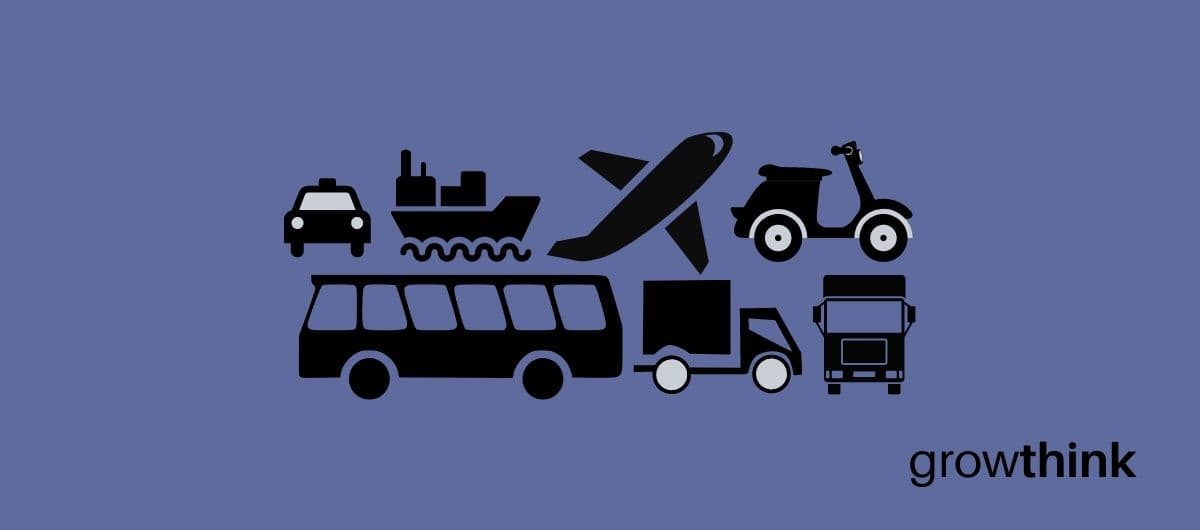
Steps to Starting a Transportation Business
How big is the transportation & warehousing industry, what are the key segments of the transportation industry, what external factors affect the transportation market, who are the key competitors in the transportation market, what are the key customer segments in the transportation market, what are the typical startup costs for a new transportation business, are transportation businesses profitable, what are the keys to launching a new transportation business, how to start a transport business faqs, helpful videos, additional resources for transportation business owners, other helpful business plan articles & templates.
Starting a transportation business is a highly profitable endeavor, but it also requires a great deal of hard work and research in order to succeed. Transportation businesses can include any type of transport, but they primarily focus on efficient and cost-effective modes of transportation for commercial use. Some examples of transport businesses are trucking companies, public transit, intercity buses, and courier services.
Businesses in the transport industry are extremely profitable because most businesses simply cannot function without some kind of transportation service. Many retail stores rely on courier services for delivery, or on public transit options for customers to reach them. This means that transportation businesses are constantly in high demand, and can charge a significant amount for their services.
If you’re interested in starting your own transportation business, there are many different things to consider before you get started. In this article, you’ll learn about what you’ll need to do in order to start a transportation business.
Importantly, a critical step in starting a transport business is to complete your business plan. To help you out, you should download Growthink’s Ultimate Business Plan Template here .
Download our Ultimate Business Plan Template here
1. Make a business plan.
The first step to starting a transportation business is to complete thorough market research for your specific transport niche and develop a transportation business plan . This document will outline your business goals, strategies, and how you plan on achieving them. It’s important to be realistic in your planning and make sure you have the financial resources to sustain your business in the early stages.
Trucking Company Business Plan
Courier Business Plan
Moving Company Business Plan
2. Determine the best business structure.
There are several different business structures for transport businesses, each with its own set of advantages and disadvantages. You can choose to be a sole proprietorship, limited liability partnership (LLP), limited liability company (LLC), S corporation, C corporation, or nonprofit organization. Once you’ve chosen your best option, you’ll need to file all the appropriate paperwork with your state government. You may also want to consult with a lawyer or accountant for assistance in setting up your business.
3. Register your business.
It is important to register your business with the appropriate government agencies, including a federal employer identification number (EIN) and registering with the state(s) in which you plan to operate. This process will vary depending on your location, but will likely require you to file paperwork and pay associated fees.
You’ll also need to get liability insurance and licenses/permits for your vehicles and drivers.
4. Find the right employees.
After your business registration, you have to find the right employees. It’s important to put together a strong team of drivers and office staff. This is an area where you’ll need to be selective because these will be the people who interact most with your customers.
Incorporate Your Business at the Guaranteed Lowest Price
We are proud to have partnered with Business Rocket to help you incorporate your business at the lowest price, guaranteed.
Not only does BusinessRocket have a 4.9 out of 5 rating on TrustPilot (with over 1,000 reviews) because of their amazing quality…but they also guarantee the most affordable incorporation packages and the fastest processing time in the industry.

5. Purchase the right vehicles.
You’ll need to purchase or lease a truck and trailer and decide on a pricing structure for your services. You’ll need to estimate demand for your transportation services and how many vehicles you’ll need to meet that demand. You’ll also want to factor in overhead costs, including insurance, fuel, maintenance, and equipment depreciation. You’ll also want to buy other equipment such as ladders and tools if necessary.
6. Buy insurance for your business and vehicles.
Insurance is a crucial part to start a transportation business. Transport businesses can be especially susceptible to litigation, so you have to make sure that you have the proper coverage in place before accidents happen. You’ll want liability insurance for any damages or injuries caused by your business and separate insurance coverage for your cargo.
7. Purchase special equipment and signage as needed.
Many transport businesses require additional types of equipment such as flatbeds, cranes, winches, warehouses, office trailers, etc. Once again it’s important to research what types of equipment you need based on the services that your company provides and factor those costs into your budgeting process.
8. Market your business.
Marketing is critical for any small business, but even more so with a transport company because it’s difficult to entice consumers without an established reputation. Transport marketing can include advertising on radio or billboards, attending trade shows, sponsoring local transport events or giving discounts to loyal customers, among many other strategies.
9. Keep accurate accounting records.
For record-keeping purposes and tax preparation/filing purposes at the end of the year, you have to make sure to document all your transactions. Transportation businesses can have a significant impact on your accounting records, cash flow and tax payments. It’s crucial that you keep accurate records at all times in order to stay compliant with local laws and avoid big penalties or fines down the line.
There are many hurdles to overcome when starting a transport business, but this is something very worthwhile. Just make sure that you go about it properly and do sufficient research before getting started so you’ll be able to optimize the likelihood of success for your new venture.
Finish Your Business Plan Today!
The transportation and warehousing industry is quite large. There are over 8 million people employed and over 1 trillion dollars generated throughout the industry every year. It’s a great idea to start your own transportation company because there is such a high demand for goods and services.
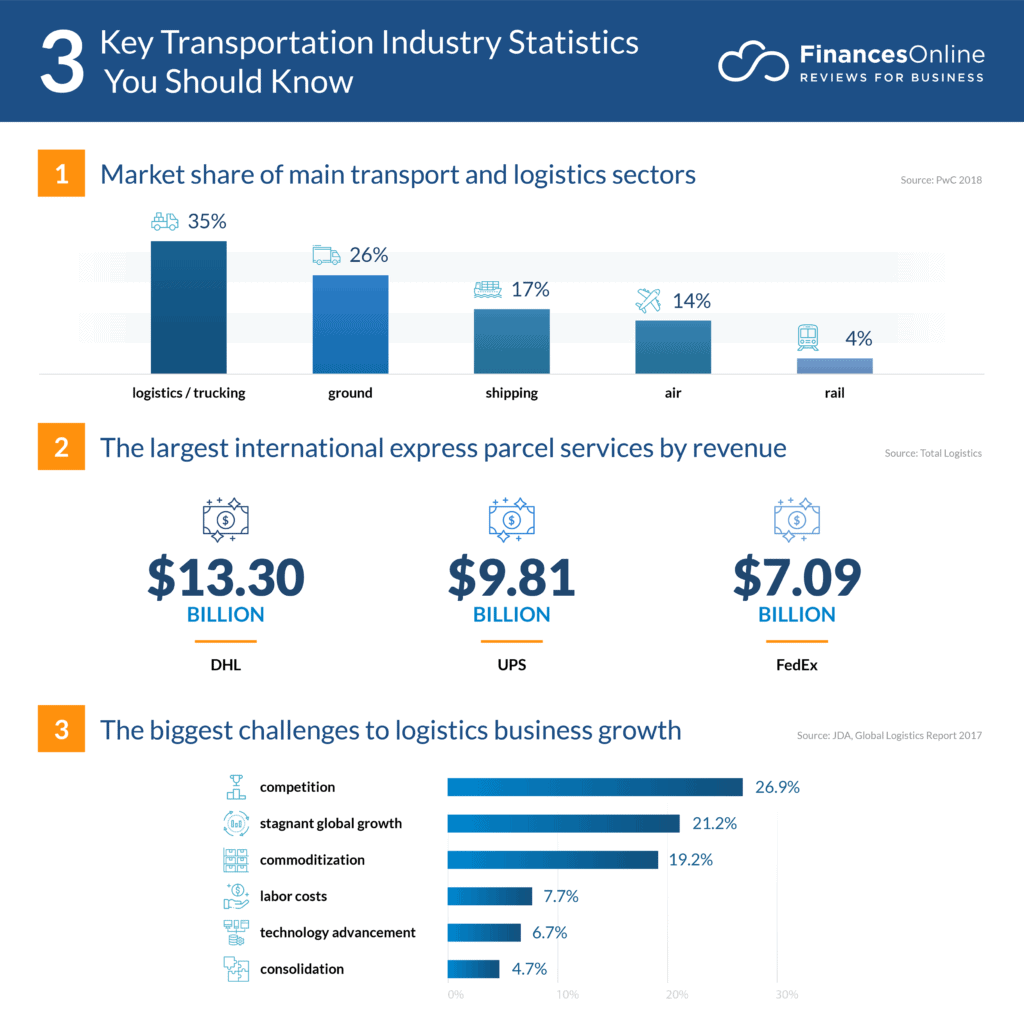
There are many key segments in the transport industry, and each sector of the market has its own unique opportunities. Here are some of the key segments of the transportation business industry:
Ground transport
This is the largest segment in the transport industry which accounts for an estimated 30.7% of sector revenue in 2021. Examples of ground transport include: companies within the trucking industry, taxi services, bus transportation, medical transport, limousine service, moving companies and other personal transport.
Air transport
This sector includes any mode of transportation of people and cargo through air like airlines, passenger carriers, charter firms, business jets/helicopters.
Railway transport
This includes transportation service via railways, such as metro lines and commuter rail, and rail freight. It’s worth about $1 billion a year, and it’s expected to grow at a fast pace over the next few years due to the increasing demand from manufacturers for this service as they ship their goods around the world more efficiently to reduce time delays.
Water transport
This includes shipping companies, ports, and freight forwarders. Operators in this industry primarily transport freight, such as coal, petrochemicals, agricultural goods, and building materials, but this also includes transportation of passengers via ship.
Pipeline transport
This segment consists of companies that use pipelines to transport products such as oil, gas, and chemicals.
There are quite a few external factors that affect the transport industry. Here are some of the most influential:
Economic conditions
This is one of the most important factors in business, and it’s no less important when it comes to global transport companies.
If there’s an economic downturn, for example, then people cut out expenses like travel and shipping goods. This, in turn, affects the transportation sector by reducing demand for certain services and goods, resulting in a loss of revenue.
On the other hand, if there’s a healthy economy then it will incentivize people to travel more frequently and buy products from all around the world which means an increase in the transporting business.
Social forces
These include population growth, cultural norms, and demand for certain products in society. This plays a huge part in transportation, as it can make or break your business.
For example, if there’s strong demand for an industry product in one country or region then this means that transport companies will serve more people and therefore be able to generate more revenue.
On the other hand, if there are social factors that are against your product or service then you might have to compete with huge companies that may be able to offer a cheaper price.
Legal factors
This includes laws, rules, and regulations in your area. The same example can be used for this situation. If there are laws in place that make your product or service illegal, then it will definitely affect transportation.
You could even be in a situation where you’re forced to fight for market share against much larger companies with huge legal teams and a lot of money.
This includes any new technologies that might change the way we transport goods and services. For example, the introduction of self-driving cars means that you could potentially lose your job if it becomes an alternative to hiring drivers.
This is because people will just be able to hail a car on their phone and send it to pick them up which would be much more convenient than hiring someone to drive them.
Weather & Natural Disasters
Weather and natural disasters are also huge factors that can affect the industry. For example, a hurricane can damage infrastructure and disrupt supply chains, which then affects the transport sector.
- Flooding can also have an impact by disrupting transportation routes and traffic.
- Snowstorms can cause roads to close and make transportation difficult.
- Wildfires can lead to evacuation orders, which means people have to leave their homes and this affects transportation.
Due to these external factors, people who work in this industry must know how to handle anything that comes their way and how to deal with competition.
In the transportation business, the key competitors are FedEx, UPS and DHL. They have been around for a while and have a lot of experience to offer. In addition, they have a good reputation in the market.
FedEx is a courier delivery service that provides next-day and express deliveries. They mainly work with businesses but they also offer services for individual customers such as packing and shipping. Their couriers will even drop off packages to remote places if needed. Some of their large clients are Coca-Cola, Apple and IBM.
UPS is a large international courier delivery service that operates in around 200 countries and territories. UPS is the world’s largest package delivery company and they provide next-day and express deliveries. They usually deliver between 7 am to 10 pm depending on the location of the recipient. Some of their large clients include Macy’s, Adidas and General Motors.
Despite being a competitor, FedEx and UPS have partnered with each other to deliver packages for each other sometimes when there was not enough time or it was too remote an area for one of them to cover on their own.
DHL is a logistics company that provides services to transport packages and parcels. They provide express deliveries from business to consumer and vice versa. One of their main competitors is UPS but FedEx has also been a competitor at times when there wasn’t enough time for either of them to deliver the package on their own due to its remoteness. Just like FedEx and UPS, DHL does not only transport parcels but also takes care of supply chain management, customs clearance, and distribution.
Depending on what you’re selling or transporting, will also determine who your key customer segments are.
For example, if you want to transport laptops and computers, then the customer segment would be businesses that need them for their offices.
If you want to transport food such as chocolates and sandwiches, then the clientele would be individuals who run snack and lunch bars.
If you want to transport medical supplies such as syringes and bandages, then your clientele would be pharmacies or doctors’ offices.
If you want to transport construction materials, then your target market would be individuals or companies that are involved in construction.
Transportation of livestock is also a big sector where the customer segment would be farmers who need them for their livestock.
Transportation of hazardous materials needs more safety so they are usually transported by professionals who have the required training and permits.
If you want to start your own transportation business, there are many things that need to be considered.
You will need to purchase or rent a vehicle depending on the size of your business. There are several types of vehicles suited for this type of industry such as trucks and vans. It is important to take into consideration how much space you’ll need for your vehicle to accommodate depending on the type of goods you will be transporting.
You’ll also need to provide for any business expenses that come with having a transportation business such as office space, vehicle maintenance and fuel, courier wages, office supplies, business licenses, permits and insurance, fuel, toll charges, and wear and tear on your vehicle.
In terms of the company’s branding and promotion, you will need to consider how much it will cost you in terms of time and money. If you don’t have a huge budget to spend on your marketing, try to be creative in coming up with ideas that won’t cost much but can still get people interested in your business.
Finally, you will need to consider how much you’ll need to pay your staff members. If you’re just starting up and will only have one or two people working for you, then it won’t be that much to pay them. However, once your business grows and you add more employees, their salaries will increase as well.
The transportation business can be highly profitable, but the amount of money you make depends on many factors such as your industry, area economy and demand levels.
One thing that’s really important to take note of is the competition in your area. If there are a lot of transport businesses operating in your area already, then it might get harder for your business to gain a foothold.
In order to determine whether or not a transportation business is profitable, you need to do some projections.
First, you need to calculate the amount of revenue your new business will generate per month.
Next, add up all your expenses that go into running the business such as vehicle expenses, insurance costs, office supplies and salaries. You’ll also have to keep track of your fuel expenses so you can determine how much it will cost you every month.
After adding up all your expenses, subtract them from your monthly revenue. This should give you an estimate on how much money your business would be making every month if everything goes according to plan.
Here are a few key things that you need to do in order to launch a successful transportation business:
Do your research
Make sure you understand the industry and the market you’re entering. This doesn’t just mean understanding the market trends, but also what’s happening in your specific region.
- Do you need additional licensing?
- Are there any government incentives that could help you grow?
Your research will really set the stage for how you develop a solid business plan and launch your business.
Start small
Don’t overreach in the beginning; start with a small fleet and grow gradually. You don’t want to invest too much money in equipment and marketing before you understand your local market and the demand for your proposed services.
Build relationships with clients, suppliers, small business owners, and other businesses in the industry. Being an entrepreneur is all about building relationships, so you should spend some time getting to know the people who are in your network. And once you’ve built up these connections, be sure to continue maintaining them even after you reach success.
Be efficient
Keep your costs low and your turnaround times fast. You want to be able to provide your clients with the best possible service and ensure their satisfaction, which means keeping your expenses under control and ensuring that you can deliver what you promise.
Keep learning
The best way to run a successful business is by constantly learning new things about both your industry and your customers. This way you can adapt to changes in the market, meet your clients’ needs, and continue building your business. Keep up with changes in technology and legislation that may affect your business. You don’t want to get stuck with old equipment or new regulations that could be crippling your business.
How to Finish Your Ultimate Business Plan in 1 Day!
Don’t you wish there was a faster, easier way to finish your business plan?
With Growthink’s Ultimate Business Plan Template you can finish your plan in just 8 hours or less!
Who can start a transportation business?
Anyone who has access to a safe vehicle with four or more wheels is able to start a transport business. However, starting a transport business may require certain licensing depending on the state/province and local authorities.
How much does it cost to start a transportation business?
The costs of starting a transportation business vary depending on the size of your fleet, the types of vehicles you use, which industry you specialize in, and your marketing budget. You can expect to spend $30,000 or more to get started.
How much time and money should I spend on maintenance for the transport business?
There is no one-size-fits-all answer to this question, as the amount of money and time you should spend on maintenance for your transport business will vary depending on the size and complexity of your business, as well as the type of vehicles and equipment you use.
However, it's a good idea to allocate a certain amount of your budget to maintenance and repairs and to set aside a certain amount of time each week or month to perform routine maintenance tasks.
Ideally, you should allocate around 10% of your income for transport business maintenance and spend at least 8 hours per week on maintenance tasks.
What business licenses should I have to start a transport business?
If you're looking to start a transportation business, there are certain local and state license requirements that you should meet.
Some of the most common licenses for transportation companies include sales tax permit/business license, DOT Number (Department of Transportation), Department of Motor Vehicles commercial vehicle registration, cargo insurance, commercial driver’s licenses (if your vehicles require one), and local business license.
What kind of insurance coverage should I get for my transportation business?
There are many types of insurance coverage that you should get for your transportation business, including general liability, commercial auto, cargo insurance (if applicable), trucker's bond/license bond (if applicable), and workers' compensation.
U.S. Department of Transportation Resources and Tools
American Public Transportation Association
NorthAmerican Transportation Association

How to Start a Passenger Transportation Company
- Small Business
- Setting Up a New Business
- Starting a Company
- ')" data-event="social share" data-info="Pinterest" aria-label="Share on Pinterest">
- ')" data-event="social share" data-info="Reddit" aria-label="Share on Reddit">
- ')" data-event="social share" data-info="Flipboard" aria-label="Share on Flipboard">
How to Start My Own Towing Business
How to open a scooter rental business, how to start a limo company in austin, texas.
- Example of a Medical Transportation Business Plan
- How to Write a Business Plan for Car Valeting
Fuel is getting more expensive every year. In 2018, U.S. customers spent $2.60 per gallon, on average. A growing number of people are leaving their cars in the garage, seeking alternative means of transportation. As an entrepreneur, you can leverage this trend and start your own passenger transportation business.
Perform drug tests and background checks on your drivers. This is a legal requirement in most states. Also, make sure they all have commercial driver's insurance.
Choose the Right Business Model
Before writing a business plan, make sure you have a good understanding of the passenger transportation industry. This market includes more than buses, taxi services and airport shuttles. Ferryboats, cruises, passenger airlines and limousine services are all an integral part of this industry. The same goes for ridesharing services like Uber and Lyft.
Each business model is subject to different regulations and involves different costs. A ridesharing service, for example, requires lower startup costs than a charter bus company. Assess your budget as well as your short- and long-term goals. Choose a type of business that aligns with your vision.
Create a Business Plan
A passenger transportation business plan should include an executive summary that describes your services, target market and goals. It also needs to outline the key aspects of your business, such as its name and location, mission statement, legal structure, expenses and financial projections, industry description, competitor analysis and more.
Try to answer the following questions in your business plan:
- How many vehicles will you operate?
- Will you lease or buy your vehicles?
- What services do you plan to offer?
- What makes you stand out from the competition?
- Who is your ideal customer?
- How many employees do you need?
- What are the costs involved?
- How much do you expect to earn?
- How do you plan to promote your business?
- What licenses and permits are required?
- What goals do you have for the first year?
- What challenges do you expect to face?
- What routes and service areas are you targeting?
This document will guide your efforts and serve as an action plan. At this point, its role is to outline what you want to achieve and how you will do it. Research the market thoroughly, study your competitors and have a clear understanding of your target audience.
Purchase a Fleet of Vehicles
Decide whether you'll lease or purchase your fleet of vehicles. Leasing a van, for example, allows you to spread the payments over time. Plus, you don't have to worry about repair and maintenance costs. The downside is that you might need to stick to a mileage limit, depending on the leasing company.
Buying a minibus, van or other vehicles will cost more. However, you can always purchase used cars to lower your expenses. Whether you buy new or used, check the cost of auto insurance beforehand. Older vehicles carry higher insurance premiums.
Estimate the costs involved, and research your financing options. Small business loans, bank loans, business lines of credit, SBA loans and peer-to-peer loans are all common ways to secure funding. Some states offer grants to business owners who purchase new environmentally friendly vehicles, so that's an option too. If your passenger transportation company has a unique concept, reach out to angel investors .
License and Registration
Make sure your business meets all legal requirements. Register it with the Secretary of State; decide on a legal structure, and choose a catchy business name. You must also apply for a tax ID number and get a commercial transportation license and/or business license.
Contact the Department of Motor Vehicles in your state to find out what licenses and permits are required. The State of California, for instance, requires drivers who operate 10- to 15-passenger vans to have a commercial driver's license. If you're planning to start a taxi company, you will need special license plates and additional permits. Some states also require passenger transportation companies to perform drug tests and background checks on their employees.
Market Your Passenger Transportation Business
Once your business is established, promote your services to the target audience. List your company in local business directories , such as Yelp, Foursquare, Bing Local, Google My Business, Yellow Pages and LinkedIn Company Directory. Add a brief description, along with a link to your website and social media pages.
Leverage the power of Facebook advertising to gain exposure in your local community. Facebook enables users to create ads that match their target market. For example, you can choose to display your ads only to customers who live within 18 miles of your city, have an annual income of $60,000+ and travel frequently.
Advertise your passenger transportation business locally too. Reach out to travel agencies and make a partnership proposal. Exchange marketing materials with other businesses, such as stores selling travel gear and accessories. Sign up for travel-related events and trade shows in your area, distribute flyers and spread the word about your services.
- Statista: Gasoline Prices in Selected Countries Worldwide in 4th Quarter of 2018
- Report Linker: Passenger Transportation
- Confused.com: Buying vs. Leasing a Van
- Fundera: The Top Small Business Funding Options for 2019
- Profitable Venture: Starting a Transportation Business With One Van
- Read and understand all local ordinances regarding where you can pick up fares. Some municipalities only allow ground transportation companies to pick up customers from designated locations, such as taxi stands.
Andra Picincu is a digital marketing consultant with over 10 years of experience. She works closely with small businesses and large organizations alike to help them grow and increase brand awareness. She holds a BA in Marketing and International Business and a BA in Psychology. Over the past decade, she has turned her passion for marketing and writing into a successful business with an international audience. Current and former clients include The HOTH, Bisnode Sverige, Nutracelle, CLICK - The Coffee Lover's Protein Drink, InstaCuppa, Marketgoo, GoHarvey, Internet Brands, and more. In her daily life, Ms. Picincu provides digital marketing consulting and copywriting services. Her goal is to help businesses understand and reach their target audience in new, creative ways.
Related Articles
How to start your own insurance company, how to start a charter bus company, how to make a business plan for charter buses, how to start a shuttle business, how to start a hot shot trucking business, how to start your own towing company, how to become a chartered bus company, how to start a small gym business, how to start a financial services business, most popular.
- 1 How to Start Your Own Insurance Company
- 2 How to Start a Charter Bus Company
- 3 How to Make a Business Plan for Charter Buses
- 4 How to Start a Shuttle Business
Business Plan Template for Transportation Companies
- Great for beginners
- Ready-to-use, fully customizable Subcategory
- Get started in seconds

Starting a transportation company can be an exciting and challenging endeavor. To set yourself up for success, you need a solid business plan that outlines your goals, strategies, and financial projections. That's where ClickUp's Business Plan Template for Transportation Companies comes in!
With this template, you'll be able to:
- Define your mission, target market, and services offered
- Conduct a thorough competitor analysis to stay ahead of the game
- Create detailed financial projections to attract investors and secure funding
- Develop growth strategies to take your transportation company to new heights
Don't let the complexities of starting a transportation business hold you back. Get started with ClickUp's Business Plan Template and pave the way for your company's success.
Business Plan Template for Transportation Companies Benefits
When transportation companies use the Business Plan Template, they gain a multitude of benefits, including:
- A clear roadmap for success that outlines their mission, goals, and target market
- Thorough analysis of competitors, enabling them to identify unique selling points and competitive advantages
- Accurate financial projections that demonstrate the company's profitability and potential return on investment
- Strategies for growth and expansion, ensuring long-term success in a competitive industry
- Increased credibility and attractiveness to potential investors, making it easier to secure funding for business operations
Main Elements of Transportation Companies Business Plan Template
Creating a solid business plan is crucial for transportation companies looking to secure funding and establish a clear roadmap for success. ClickUp's Business Plan Template for Transportation Companies includes:
- Custom Statuses: Track the progress of different sections of your business plan, such as Complete, In Progress, Needs Revision, and To Do, ensuring each aspect is efficiently managed and updated.
- Custom Fields: Utilize custom fields like Reference, Approved, and Section to add relevant information to your business plan and easily categorize and organize different sections.
- Custom Views: Access five different views, including Topics, Status, Timeline, Business Plan, and Getting Started Guide, to analyze and present your business plan in various formats, ensuring a comprehensive and visually appealing representation of your transportation company's goals and strategies.
How To Use Business Plan Template for Transportation Companies
Crafting a business plan for your transportation company can seem like a daunting task, but with the help of ClickUp's Business Plan Template and the following steps, you'll be on your way to success:
1. Define your mission and vision
Start by clearly stating the purpose of your transportation company. What problem are you solving, and what sets you apart from the competition? Additionally, outline your long-term goals and the impact you aim to make in the industry.
Use a Doc in ClickUp to articulate your mission and vision statement.
2. Conduct market research
Next, gather data and insights about the transportation industry. Identify your target market, competitors, and any trends or challenges that may affect your business. This research will help you make informed decisions and position your company for success.
Use the Table view in ClickUp to organize and analyze your market research findings.
3. Develop your service offerings
Outline the specific transportation services you'll provide and how they meet the needs of your target market. Consider factors such as pricing, routes, vehicle types, and any additional value-added services you can offer.
Create tasks in ClickUp to map out and develop your service offerings.
4. Build your operational plan
Detail the day-to-day operations of your transportation company. This includes logistics, fleet management, maintenance, safety protocols, and any regulatory requirements you need to adhere to. Establishing efficient processes and protocols will ensure smooth operations.
Use the Gantt chart in ClickUp to visualize and plan your operational timeline.
5. Create a marketing and sales strategy
Define how you'll promote your transportation services and attract customers. This may include digital marketing, partnerships, referrals, and advertising. Additionally, outline your sales strategy, including how you'll generate leads, nurture relationships, and close deals.
Use Automations in ClickUp to streamline your marketing and sales processes.
6. Set financial goals and projections
Finally, determine your financial goals and projections for your transportation company. This includes estimating revenue, expenses, and profitability over a specific period. Consider factors such as pricing, costs of operations, and market demand.
Use custom fields in ClickUp to track and analyze your financial data.
By following these steps and leveraging ClickUp's Business Plan Template, you'll have a comprehensive plan in place to guide your transportation company towards success.
Get Started with ClickUp’s Business Plan Template for Transportation Companies
Transportation companies can use this Business Plan Template for Transportation Companies to create a comprehensive roadmap for their operations and attract investors.
First, hit “Add Template” to sign up for ClickUp and add the template to your Workspace. Make sure you designate which Space or location in your Workspace you’d like this template applied.
Next, invite relevant members or guests to your Workspace to start collaborating.
Now you can take advantage of the full potential of this template to create a robust business plan:
- Use the Topics View to organize different sections of your business plan, such as mission, goals, target market, services offered, competitor analysis, financial projections, and growth strategies
- The Status View will help you track the progress of each section, with statuses like Complete, In Progress, Needs Revision, and To Do
- The Timeline View allows you to visualize the timeline of your business plan and set deadlines for each section
- The Business Plan View provides a comprehensive overview of your entire plan, allowing you to easily navigate and make edits
- The Getting Started Guide View offers step-by-step instructions on how to use the template and fill in each section
- Utilize custom fields like Reference, Approved, and Section to add additional information and track important details
- Collaborate with team members to gather input, make revisions, and ensure a cohesive and compelling business plan
- Monitor and analyze the progress of your business plan to ensure it aligns with your goals and attracts investors.
- Business Plan Template for Nordstrom
- Business Plan Template for Logistics Professionals
- Business Plan Template for Ui Designers
- Business Plan Template for Electricians
- Business Plan Template for Online Courses
Template details
Free forever with 100mb storage.
Free training & 24-hours support
Serious about security & privacy
Highest levels of uptime the last 12 months
- Product Roadmap
- Affiliate & Referrals
- On-Demand Demo
- Integrations
- Consultants
- Gantt Chart
- Native Time Tracking
- Automations
- Kanban Board
- vs Airtable
- vs Basecamp
- vs MS Project
- vs Smartsheet
- Software Team Hub
- PM Software Guide
Transportation, Logistics & Travel Business Plans
- IT, Staffing & Customer Service
- Construction, Architecture & Engineering
- Food, Beverage & Restaurant
- Real Estate & Rentals
- Mobile Apps & Software
- Education & Training
- Beauty Salon & Fitness
- Medical & Health Care
- Retail, Consumers & E-commerce
- Entertainment & Media
- Transportation, Logistics & Travel
- Agriculture, Farm & Food Production
- Nonprofit & Community
- Manufacturing & Wholesale
- Clothing & Fashion
- Children & Pets
- Fine Art & Crafts
- Cleaning, Maintenance & Repair
- Hotel & Lodging
- Finance & Investing
- Consulting, Advertising & Marketing
- Accounting, Insurance & Compliance
How to Write an Uber Business Plan + Free Template
Truck Owner Operator Business Plan
Car Rental Business Plan
Charter Boat Business Plan
Roadside Assistance Business Plan
Airline Business Plan
Food Distribution Business Plan
EV Charging Business Plan
Medical Transport Business Plan
Electric Vehicle Business Plan
Tour Operator Business Plan
Limousine Business Plan
Delivery Service Business Plan
Logistics Business Plan
Courier Business Plan
Tow Truck Business Plan
Trucking Business Plan
Travel Agency Business Plan
Taxi Business Plan
Food Delivery Business Plan
RV Park Business Plan
Dump Truck Business Plan
Freight Brokerage Business Plan
Moving Company Business plan
Hot Shot Trucking Business Plan
Box Truck Business Plan
Did you find what you are looking for.
Considering starting a car rental business? Or is it about a tow trucking company?
Well, no matter what your transportation or logistics business is about—you need a winning business plan to launch and turn it into a long-term success.
This library of logistics and transportation business plan examples here can inspire and guide you as you begin to plan your business. So, don’t worry; we got you covered on that part.
Let’s learn more about these sample business plans, starting with their benefits.
Benefits of using an industry-specific business plan example
Believe it or not, using an industry-specific business plan example is the best and probably the quickest way of writing a business plan.
Doubt it? Hold, this may change your perception; an extended list of the benefits of using an industry-specific business plan template.
- Inspiration : Reading a business-specific template can be incredibly helpful in getting content inspiration. Furthermore, it helps you gain insights into how to present your business idea, products, vision, and mission.
- Risk-free method : You are taking a reference from a real-life, let’s say, travel agency business plan—so you know this plan has worked in the past or uses a method subscribed by experts.
- Deep market understanding : Analyzing and reading such examples can provide clarity and develop a deeper market understanding of complex industry trends and issues you may not know but relate directly to the realities of your business landscape.
- Increased credibility : A business plan developed using an example follows a standard business plan format, wisely presents your business, and provides invaluable insights into your business. There’s no question it establishes you as a credible business owner, demonstrating your deep business and market understanding.
- Realistic financial projections : Financial forecasting being a critical aspect of your plan, this real-life example can help you better understand how they project their financials—ultimately helping you set realistic projections for your business.
These were the benefits; let’s briefly discuss choosing a logistics or travel business plan template that best suits your business niche.
Choosing a Transportation, Logistics, or Travel Business Plan
This category has multiple business plan templates for various retail and online businesses. With many similar business types and templates, you may not find the most suitable one through manual scrolling.
Here are the steps to consider while choosing the most suitable business plan template.
Identify your business type
Are you going to be a travel agency? A hot shot trucking service provider? Or a luxury Limousine business?
Asking yourself these questions will help you identify your business type, which will help in choosing a niche-specific business plan template.
Once you identify your business type, you can choose between templates for different business segments.
Search for the template
We have an in-built search feature, so you can easily search for a business-specific template using your business type as a key term. Once you have the search results, choose the most suitable one. Simple as that.
Review the example
Look closely at the content of the sample business plan you are considering. Analyze its sections and components to identify relevant as well as unnecessary areas.
Since all the Upmetrics templates are tailored to specific business needs, there won’t be many fundamental customizations. However, a hybrid business model targeting multiple customer segments may require adjustments.
No big deal—you can view and copy sections from other business plan examples or write using AI while customizing a template.
That’s how you find and select the most suitable travel or logistics company business plan. Still haven’t found the perfect business plan example? Here’s the next step for you.
Explore 400+ business plan examples
Check out Upmetrics’ library of 400+ sample plans and get your free business plan template now. Upmetrics is a modern and intuitive business planning software that streamlines business planning with its free templates and AI-powered features. So what are you waiting for? Download your example and draft a perfect business plan.
From simple template to full finished business plan
No Risk – Cancel at Any Time – 15 Day Money Back Guarantee

Transportation Business Plan Templates

But to achieve success in the transportation industry, you need a business plan.
Each transportation business plan template below is crafted to guide you through every essential section of your business plan: the Executive Summary, Company Overview, Industry Analysis, Customer Analysis, Competitive Analysis, Marketing Plan, Operations Plan, Management Team, and Financial Plan. We understand the unique challenges and opportunities in the transportation industry, and our templates are tailored to help you navigate these with ease, ensuring a comprehensive and professional approach to launching and growing your business in this exciting sector.
Transportation Business Plan Examples
Oil Change Business Plan Template
Airport Shuttle Business Plan Template
Auto Parts Store Business Plan Template
Bike Rental Business Plan Template
Custom Car Shop Business Plan Template

Sample Transportation Business Plan
Transportation company business plan sample.
Transportation is a business that does not need any real skill before an individual can set it up.
Unlike some other businesses that require a high level of skill before being successfully set up, with a transport business, talent is replaced by experience. This means that there are three major requirements for setting up this business.
They are experience, capital, and business plan.
Need to write a plan for your venture? Download a FREE Business Plan PDF Sample to develop a template for your own startup.
We believe that if you are setting up this business, you already have the required capital and experience; all you need is the right business plan. Well, this article is a transportation business plan sample.
This business plan sample can be relied upon to help you develop the right business plan, even when starting a fuel or truck transport business.
Other Transport-Based Business Plans:
- Bike taxi business plan
- Wheel alignment business plan
- Valet parking business plan
- Non-emergency medical transportation business plan
- Bike shop business plan
- Truck operator business plan
- Taxi service business plan
- Limousine business plan
- Car rental business plan
- Mobile oil change business plan
- Car service business plan
- Auto GPS tracking business plan
- Auto repair business plan
- Auto Detailing business plan
- Automotive business plan
- Driving school business plan
- Charter bus business plan
- Roadside assistance business plan
- Diesel distribution business plan
- Dealership business plan
- Bike rental business plan
- Private jet charter business plan
- Truck driving school business plan
- Tire shop business plan
- Airport management business plan
- Child transportation services business plan
Here is a sample business plan for starting a cargo van or passenger transport business .
Business Name: Dani Brown Transportation Company
Executive Summary
- Our Products and Services
Vision Statement
Mission Statement
Business Structure
- Market Analysis
Sales and Marketing Strategy
- Financial Plan
Competitive Advantage
Dani Brown Transportation Company is a registered and licensed transportation company that will be located in Brooklyn, New York. This transport company is jointly owned by Daniel Pascal and Teddy Brown, Two big-time businessmen with over 30 years of experience in the transportation business.
Dani Brown Transportation Company will be set up with $200,000. This amount will be used to get a facility serving as an office and a car park. In addition, a massive chunk of the $200 000 will be used to get the vehicles needed to start this business.
Products and Services
We will not deny that this business was set up primarily to make a profit. However, beyond that, there are other reasons why we have decided to set up this business. Chief among these reasons is that we want to make top-quality transportation options available to Brooklyn, New York, residents, and potential clients in other cities in the United States.
As much as we want to start on a reasonably small note, we hope to expand very early. Some of the products that we will be offering to our potential at Dani Brown Transportation Company are;
- Taxi services
- Helicopter services
- Airline services
Our vision in the transportation industry is to establish a transport company that will be regarded as one of the best transport companies not just in New York but also in other parts of the United States and parts of Canada. The
Our mission is to set up a standard transportation company known for constantly providing our potential customers with high comfort and luxury. We are also looking to franchise our transport company after being in operation for up to five years.
In addition to providing top-quality services for our clients, we are also looking to establish a transportation company that is top-notch as well as very affordable.
The fact that no real skill is needed to set up this business indicates how competitive it is. Becoming a force to be reckoned with in this industry will not come easy, and we are very aware.
As a result of this, to achieve all that we have set out to accomplish as a company, we have devised to come up with a policy that will favor only those that are hardworking and also very willing to learn.
Market Analysis Market Trend
There has been steady growth in the transportation industry over a long period. This is a result of the fact that new categories are being added to the transport business regularly. Gone are the days when the transportation business only involves managing cars and buses.
The transport business involves cars, buses, planes, boats, and even helicopters. This has therefore brought about unforeseen growth.
In addition to the growth that has taken place in the transport industry, successfully running a transport business has become much more complex and challenging than it used to be.
As a new transportation company, we will need to do a lot of work to make our name known to members of the public. We must also ensure that our potential customer’s trust and are willing to do business with us. To make all this happen rapidly, we will be doing the following;
- Printing handbills and making them available in public places
- Have a strong internet presence
- Offer discount prices to our first set of potential customers
Target Market
This business does not differ from others because a target market must exist. We have taken out time to carry out our research and have come up with what we believe is the perfect target market.
Those in our target market are:
- Pregnant women and Nursing Mothers
- Business Executives
Financial Goal Source of Startup Capital
As it stands, we need $200,000 to set up our business. Of this amount, we have been able to raise $100,000. The other amount will be gotten from the bank.
Our advantage over other firms is there; we are not ending at just owning cars and buses; we are into all forms of transportation. Also, we are strategically positioned in a part of the city where we can be easily reached.
This is a business plan sample for a transportation business. This business will be located in Brooklyn, New York, owned by Daniel Pascal and Teddy Brown.
Leave a Comment Cancel reply
Van Transportation Business Plan Template & Guidebook
How to write a van transportation business plan in 7 steps:, 1. describe the purpose of your van transportation business., 2. products & services offered by your van transportation business., 3. build a creative marketing stratgey., target market, customer base , product or service description, competitive analysis, marketing channels, form an llc in your state, 4. write your operational plan., what equipment, supplies, or permits are needed to run a van transportation business, 5. management & organization of your van transportation business., 6. van transportation business startup expenses & captial needed., 7. financial plan & projections, frequently asked questions about van transportation business plans:, why do you need a business plan for a van transportation business, how to write a business plan for your van transportation business), can you write a van transportation business plan yourself, related business plans, home inventory business plan template & guidebook, home inspection business plan template & guidebook, home decor business plan template & guidebook, health and wellness business plan template & guidebook, hauling business plan template & guidebook, hardware business plan template & guidebook, handyman business plan template & guidebook, hair extension business plan template & guidebook, handbag business plan template & guidebook.
I'm Nick, co-founder of newfoundr.com, dedicated to helping aspiring entrepreneurs succeed. As a small business owner with over five years of experience, I have garnered valuable knowledge and insights across a diverse range of industries. My passion for entrepreneurship drives me to share my expertise with aspiring entrepreneurs, empowering them to turn their business dreams into reality.
Need a business plan? Call now:
Talk to our experts:
- Business Plan for Investors
- Bank/SBA Business Plan
- Operational/Strategic Planning
- L1 Visa Business Plan
- E1 Treaty Trader Visa Business Plan
- E2 Treaty Investor Visa Business Plan
- EB1 Business Plan
- EB2 Visa Business Plan
- EB5 Business Plan
- Innovator Founder Visa Business Plan
- UK Start-Up Visa Business Plan
- UK Expansion Worker Visa Business Plan
- Manitoba MPNP Visa Business Plan
- Start-Up Visa Business Plan
- Nova Scotia NSNP Visa Business Plan
- British Columbia BC PNP Visa Business Plan
- Self-Employed Visa Business Plan
- OINP Entrepreneur Stream Business Plan
- LMIA Owner Operator Business Plan
- ICT Work Permit Business Plan
- LMIA Mobility Program – C11 Entrepreneur Business Plan
- USMCA (ex-NAFTA) Business Plan
- Franchise Business Planning
- Landlord Business Plan
- Nonprofit Start-Up Business Plan
- USDA Business Plan
- Cannabis business plan
- eCommerce business plan
- Online Boutique Business Plan
- Mobile Application Business Plan
- Daycare business plan
- Restaurant business plan
- Food Delivery Business Plan
- Real Estate Business Plan
- Business Continuity Plan
- Buy Side Due Diligence Services
- ICO whitepaper
- ICO consulting services
- Confidential Information Memorandum
- Private Placement Memorandum
- Feasibility study
- Fractional CFO
- How it works
- Business Plan Examples
Transportation Business Plan Sample
Published Jul.04, 2013
Updated Apr.24, 2024
By: Jakub Babkins
Average rating 4.2 / 5. Vote count: 5
No votes so far! Be the first to rate this post.
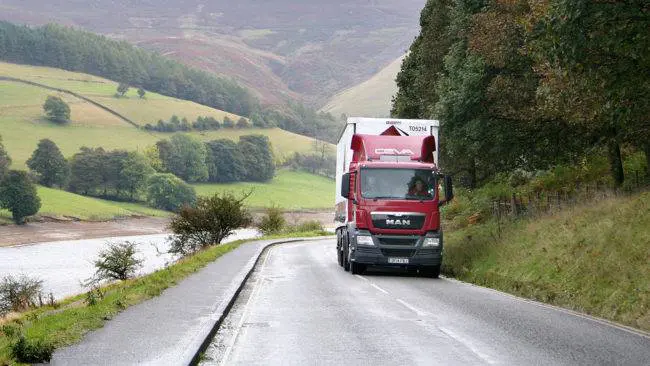
Table of Content
Introduction
Every transportation business plan needs to be based on a thorough knowledge of the market in which the business intends to operate. Without this solid foundation, the plan may only be effective on paper.
Your business can have a very short life if it does not consider its major competitors and the availability of clients. Your transportation business plan should show what fares can reasonably be charged given the current demand for such services and the expected profit level.
A quality transportation business plan from us will account for all of this.
Frequently asked questions of transportation business plan
- Your transportation business plan should explain what your goals are regarding profits and other measures of success?
- How will those goals be met in the current transportation business market?
- What fares will be necessary to reach these goals and are these fares realistic?
- How many employees and vehicles will the business have?
- How much will vehicles, fuel, maintenance, insurance, and everything else cost?
- How will the transportation business plan manage all this and still gain enough clients to avoid being run out of business by its competitors?
Executive Summary
The executive summary section of your business plan for transportation service should give an overview of the content of the plan, leaving the finer detail to the following sections. For this reason, it is often written after the detail of the transportation business plan has been completed.
It’s important that the first paragraph gets your readers’ attention and draws them in. This is your opportunity to show your excitement for the new business and the problem it intends to solve.
Company Overview
This section of the transportation business proposal describes the structure of the company. It details the name of the company, any trading names that will be used and where the company is registered.
You will also need to decide the form of the business, such as a sole proprietor or partnership and give the reasons for this choice. You should name the directors and shareholders here along with a brief history of the company and why you started it.
What transportation services do you plan to offer? What are the benefits for your customers and why would your ideal customer choose your company? What problem does your service solve for your clients?
Don’t forget to include the basics. You are the industry expert, but the people reading your transportation business model may not be. Keep it simple and explain the fundamentals of the transportation business you are offering.
Competitive Analysis

Here you are focusing on the industry you will be operating in, your direct and potential competitors in the transportation business.
You need to identify the strengths and weaknesses of your competitors. This can help you provide a better solution for your ideal clients and give your company a unique selling point.
Look at their marketing strategic plans , websites, social media profiles and any marketing material you can get hold of. Use this information to show how your company will be different and why you will succeed.
We can provide you with a free sample transportation business plan that helps you understand this important section.
Marketing Strategies
While looking at your competitive analysis, you should have discovered your competitors marketing strategies. What is working or failing and what can be incorporated into your own marketing strategy?
You should explain how you will build a brand around your services using traditional offline marketing. How will your online marketing compliment this? Taking guidance on how to write a business plan for transportation can help focus on your marketing strategy.
What is your budget for marketing? Do you have any sales and marketing staff or will you outsource this? You should also point out the key focus of your marketing, such as a USP or any promotional events planned.
Depending on your transportation business plan structure, this section details the people in your company. Is there a board of directors? Do you need to employ staff and if so what does the role contribute to the company’s success?
Your passenger transportation business plan should describe the company’s growth plan and identify the staff required and the salary costs. These figures will help determine the income required to sustain the company’s growth plan.
Financial Plan
Your transportation business plan maybe just for your reference or could be used to convince investors that your company is a good prospect. This section is vitally important in either case to monitor business growth and sustainability.
You should include here basic accounting reports, such as the balance sheet showing assets, liabilities and equity.
Also important is the cash flow analysis that shows your expected income against the expected expenses. For an established business, you can include a profit-and-loss statement for the previous 12-month period.
The success of your company very much depends on the business plan transportation logistics and how it can be financed.
How to order writing a business plan transportation
If you want genuine, lasting success, then fill out the contact form on this page to get your own free sample transportation business plan. We will do the heavy lifting so that you will know what you’re up against and what you need to do to succeed in the face of this adversity.
When you have our professionals business consultants working on personalized transportation business plan examples to guide your business from opening day on, your business’s success is closer than ever to becoming a reality.
Download Transportation Business Plan Sample in pdf
OGS capital professional writers specialized also in themes such as tipper truck company business plan , logistics business plan , business plan for professional taxi service , tow truck company business plan , transport strategic business plan , business plan for a trucking company , etc.
OGSCapital’s team has assisted thousands of entrepreneurs with top-rate business plan development, consultancy and analysis. They’ve helped thousands of SME owners secure more than $1.5 billion in funding, and they can do the same for you.

Ice Vending Machine Business Plan

OGScapital at the National Citizenship and Immigration Conference

How to Start a Plumbing Business in 2024: A Detailed Guide

Vegetable Farming Business Plan

Trading Business Plan

How To Write A Textile Manufacturing Business Plan

Any questions? Get in Touch!
We have been mentioned in the press:
Leave a Reply Cancel reply
Your email address will not be published. Required fields are marked *
Save my name, email, and website in this browser for the next time I comment.
Search the site:
- Business Templates
- Sample Plans
FREE 10+ Transport Business Plan Samples in PDF

The transport business is a massive one that encompasses the transportation of people and products. The transportation industry has recently experienced a lot of growth thanks to the expansion of various new players in the market, such as organizations that rent out cars, trucks, and temporary offices, amongst other things. The transportation industry receives a significant boost due to the ever-expanding economy and the ongoing movement of workers from one city to another. This movement creates many opportunities for new sales businesses , including movers and packers, food trucks , bike rentals , and many more.
Transport Business Plan
10+ transport business plan samples, 1. transport business plan, 2. transportation business plan example, 3. service transport business plan, 4. regional public transportation business plan, 5. transport ministry business plan, 6. sample transport business plan outline, 7. business plan for palace transit, 8. women transport business plan, 9. transport scotland business plan, 10. sustainability transport business plan, 11. analysis of strategic planning in transport, what is a transport business plan, how to make a transport business plan, 1. selecting a business venture, 2. collecting information, 3. getting a proper license, 4. purchasing of vehicles, which is the best transport business, what should i include in my transportation business proposal, and how do i draft it, how do transport businesses attract clients.
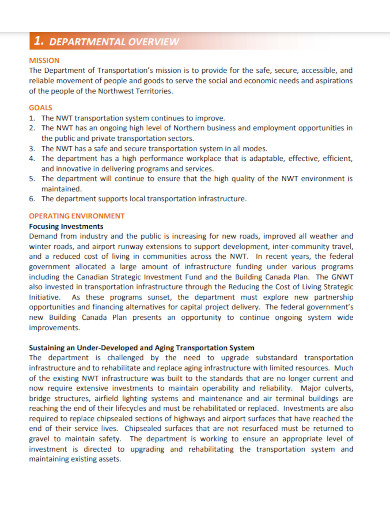
Size: 101 KB
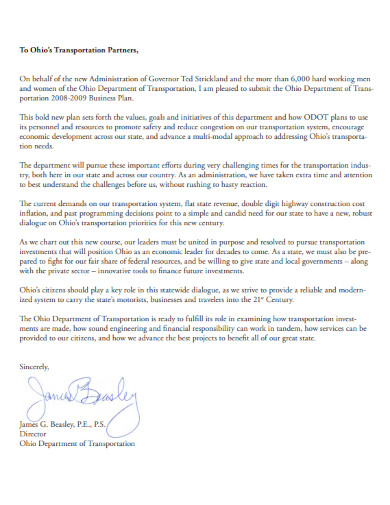
Size: 68 KB
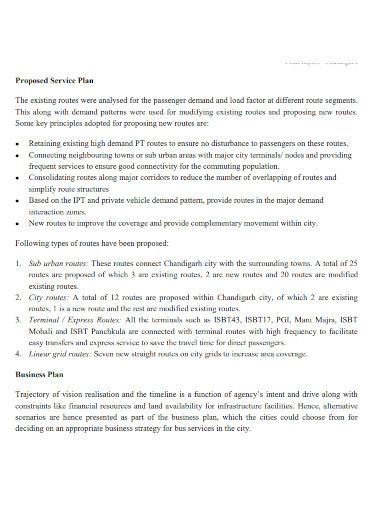
Size: 76 KB

Size: 95 KB
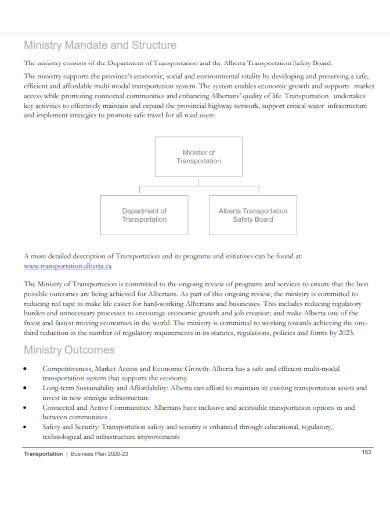
Size: 60 KB
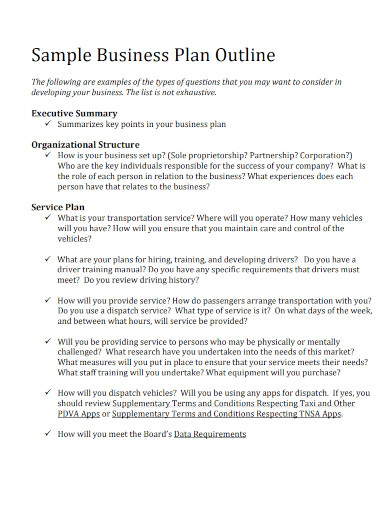
Size: 111 KB

File Format
Size: 89 KB
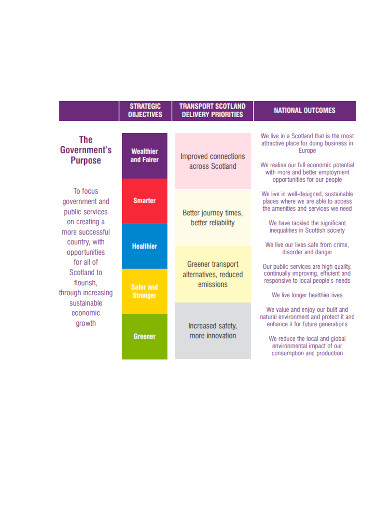
Size: 43 KB
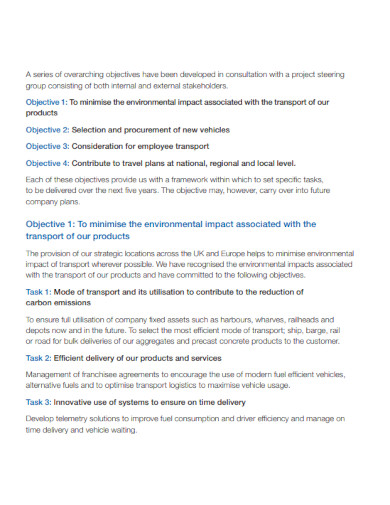
Size: 62 KB

A transportation business plan provides an overview of your transportation company as it exists at present and outlines your expansion strategy for the subsequent five years. It describes your company’s objectives and the approach you will take to achieve those objectives. In addition to that, it requires conducting market research to back up your plans.
The foundation of a successful business plan for a transportation company is typically the same as the foundation for any other form of business plan. Entrepreneurs must first choose which type of transportation business suits them and the current market condition. Following that, an additional significant initial stage is to establish the aims and business goals of the business and then begin from that point.
As was discussed, determining the kind of commercial enterprise that will be pursued is the first step in launching any business. This decision was taken after considering several variables, including the entrepreneur’s competencies, the amount of capital investment that must be made, the present market state, the availability of driver partners, licenses and permissions, and other similar considerations.
The availability of a wealth of information is essential to the success of any enterprise. For the efficient operation of commercial organizations, it is vital to have information relating to all parts of the business, regardless of how large or small they may be. When operating a transport company, the business owner is responsible for compiling all pertinent information concerning the permissions required for interstate transport or permits unique to the items being transported.
The entrepreneur will first need to gather all the relevant information and then establish the overall structure of the business before moving on to the next step, which is to obtain the licenses and licenses required to run the firm. These permits will include the ability to carry goods within the state or beyond national borders, depending on the circumstances, and registration of cars used for business reasons. According to the legislation, a vehicle that has been registered for personal use may not be utilized for any business-related activities.
This is the most crucial part of the business because it will determine whether the business is successful or unsuccessful in the long run. Suppose the cars that are purchased are not in line with the goal or concept of the business. In that case, the entity may run into various issues, such as failing to fulfill the target scale of operations, wasteful wastage of fuels, overspending on the cost of gasoline, etc.
Towing Service, Taxi Cab Business, Trucking, and Car Hire.
Typically, a transportation proposal should include an overview of the transport company, detailing the services provided and the vehicles available for transportation.
Communicate with the shippers, get in touch with firms that handle a significant amount of shipping, and pitch your services to them so that you may expand your list of customers.
If you are interested in either of these options, you need a business plan to launch a new transportation company or expand an existing one. To boost your chances of success in the transportation sector, developing a business plan will assist you in, among other things, planning the expansion of the company and raising capital, should you require it. Your firm will likely see growth and change during the next year, so your business plan should be reviewed and revised every year.
Related Posts
9+ trucking business plan template - pdf, word, free 9+ delivery service business plan samples [ food, home ..., free 10+ logistic report samples in ms word pdf, free 10+ it services proposal samples [ support, consulting ..., free 5+ investment company business plan samples [ group ..., free 14+ travel business plan templates in pdf ms word ..., free 10+ logistics proposal samples [ service, project ..., free 10+ transportation business report samples [ truck ..., free 4+ waste management business plan samples in pdf ms ..., free 10+ software company business plan samples in ms word ..., free 8+ cafeteria business proposal samples in ms word ..., free 25+ company profile samples in pdf, free 10+ remote work emergency plan samples in ms word ..., free 8+ food supply proposal samples in pdf, free 9+ sample emergency response plan templates in pdf ..., free 10+ transportation calendar samples in pdf ms word, free 10+ trucking company profile samples in pdf doc, free 9+ transport company profile samples in pdf, free 10+ logistics services proposal samples in ms word ....
Get instant access to detailed competitive research, SWOT analysis, buyer personas, growth opportunities and more for any product or business at the push of a button, so that you can focus more on strategy and execution.
Table of contents, creating an effective bus transportation business plan.
- 31 May, 2024

Understanding the Industry
Before starting a bus transportation business, it is essential to have a comprehensive understanding of the industry. This section provides an overview of the bus transportation business and highlights the importance of conducting a market analysis.
Overview of Bus Transportation Business
The bus transportation business involves providing transportation services to passengers using buses. This can include various types of bus services such as local transit, intercity travel, charter services, and more. Buses are a vital mode of transportation, offering convenience and affordability for both urban and rural areas. They serve as a reliable means of transportation for commuters, tourists, students, and other individuals.
Starting a bus transportation business requires careful planning and consideration of various factors. It is crucial to define your target market, identify the types of services you will offer, and determine the size and scope of your operation. Additionally, understanding the legal requirements and safety regulations associated with the bus transportation industry is essential to ensure compliance and the smooth operation of your business.
To learn more about how to start a bus transportation business, refer to our comprehensive guide on how to start a bus transportation business . This guide provides detailed information on the steps involved in starting a bus company, including market research, business planning, and legal considerations.
Market Analysis
Conducting a thorough market analysis is crucial for the success of your bus transportation business. This analysis involves evaluating the demand for bus transportation services in your target market and identifying potential competitors.
To understand the demand for bus transportation services, consider factors such as population density, commuting patterns, tourist attractions, and existing transportation infrastructure. Analyze the demographics and preferences of your target customers to determine the specific transportation needs and preferences of the market.
Furthermore, researching your competitors will provide valuable insights into the market landscape. Identify other bus transportation companies in your region and assess their services, pricing, and market positioning. This analysis will help you identify gaps in the market and develop strategies to differentiate your business.
For a comprehensive guide on conducting market research and developing a business plan for your bus transportation business, refer to our bus transportation startup guide . This guide offers valuable insights and resources to help you navigate the market and develop a successful business model.
By understanding the bus transportation industry and conducting a thorough market analysis, you will be better equipped to develop a robust business plan and make informed decisions for the future of your bus transportation business.
Planning Your Business
Before embarking on the journey of starting a bus transportation business, it is essential to thoroughly plan and strategize. This section will cover the key aspects of developing a business plan, legal considerations, and insurance requirements.
Developing a Business Plan
To ensure the success and profitability of your bus transportation business, it is crucial to develop a comprehensive business plan. This plan will serve as a roadmap, outlining your goals, strategies, and financial projections. A well-crafted business plan should include the following:
Executive Summary : A concise overview of your business, highlighting its mission, objectives, and competitive advantage.
Company Description : Detailed information about your bus transportation business, including its legal structure, location, and target market.
Market Analysis : Extensive research on the bus transportation industry, including market trends, competitors, and customer demographics.
Organizational Structure : An overview of the internal structure of your business, including key personnel and their roles.
Products and Services : A description of the services you will offer, such as charter bus services, shuttle services, or tour packages.
Marketing and Sales Strategy : Your plan for promoting and acquiring customers, including your branding, advertising, and customer acquisition strategies.
Financial Projections : Detailed financial forecasts, including income statements, cash flow statements, and balance sheets. This section should also outline your funding requirements and potential sources of financing.
Developing a well-rounded business plan will not only help you clarify your objectives but will also provide a solid foundation for securing funding and attracting potential investors. For more guidance on developing a business plan, refer to our comprehensive bus transportation startup guide .
Legal Considerations
Starting a bus transportation business involves several legal considerations to ensure compliance and protect your interests. Some important legal aspects to address include:
Business Registration : Registering your bus transportation business as a legal entity, such as a sole proprietorship, partnership, or limited liability company (LLC).
Permits and Licenses : Obtaining the necessary permits and licenses to operate a bus transportation business, which may include local, state, and federal permits.
Contractual Agreements : Drafting and reviewing contracts, including service agreements with clients, lease agreements for vehicles, and employment contracts for staff.
Employee Regulations : Understanding and complying with labor laws, including regulations related to wages, working hours, and employee benefits.
Insurance Coverage : Acquiring appropriate insurance coverage to protect your business, employees, passengers, and vehicles. We will delve into insurance requirements in the next section.
Ensure that you consult with legal professionals experienced in the transportation industry to ensure full compliance with all legal obligations. This will help safeguard your business and mitigate potential risks.
Insurance Requirements
Running a bus transportation business comes with inherent risks, making adequate insurance coverage crucial. Some essential insurance policies to consider include:
Commercial Auto Insurance : This policy provides coverage for your vehicles, protecting them against damage, theft, and liability in case of accidents.
General Liability Insurance : Protects your business from claims of bodily injury, property damage, or personal injury arising from your operations.
Workers’ Compensation Insurance : Required in many jurisdictions, this insurance provides coverage for medical expenses and lost wages in case of work-related injuries or illnesses suffered by your employees.
Passenger Liability Insurance : Covers liabilities arising from injuries or property damage suffered by passengers while using your bus transportation services.
Business Interruption Insurance : Provides financial protection in case your business operations are interrupted due to unforeseen events, such as natural disasters or accidents.
It is crucial to consult with insurance professionals who specialize in the transportation industry to identify the specific insurance requirements for your bus transportation business. They can guide you in choosing the appropriate coverage to adequately protect your business and passengers.
By thoroughly planning your bus transportation business, understanding the legal considerations, and obtaining the necessary insurance coverage, you can lay a solid foundation for a successful and secure venture. Remember to consult professionals and industry experts to ensure compliance and mitigate potential risks.
Setting Up Operations
When starting a bus transportation business, setting up effective operations is crucial to ensure smooth and efficient service delivery. This section will cover three key aspects of setting up operations: fleet management, hiring staff, and safety regulations.
Fleet Management
Fleet management plays a critical role in the success of a bus transportation business. It involves acquiring and maintaining a fleet of buses that meet the needs of your target market. Proper fleet management ensures that your buses are safe, reliable, and well-maintained.
To effectively manage your fleet, consider the following:
Acquiring Buses : Determine the number and types of buses needed to meet the demand. Consider factors such as seating capacity, accessibility features, and fuel efficiency. Additionally, assess whether purchasing or leasing buses aligns better with your business goals and financial resources.
Maintenance and Repairs : Establish a regular maintenance schedule to keep your buses in optimal condition. This includes routine inspections, oil changes, tire rotations, and addressing any mechanical issues promptly. Adhering to manufacturer guidelines and working with certified mechanics can help ensure the longevity and reliability of your fleet.
Fuel Management : Monitor and manage fuel consumption to control costs and minimize environmental impact. Implement fuel efficiency practices such as training drivers in eco-friendly driving techniques, tracking fuel usage, and utilizing fuel-efficient technologies.
For more detailed guidance on fleet management best practices, refer to the “Best Practices in Bus Fleet Management” resource provided by the American Public Transportation Association ( APTA ).
Hiring Staff
Building a competent and reliable team is essential for delivering exceptional service in the bus transportation industry. When hiring staff, consider the following:
Driver Recruitment : Seek qualified and experienced drivers who hold the necessary licenses and certifications. Conduct thorough background checks, including driving records and drug testing, to ensure the safety and trustworthiness of your drivers.
Operations Staff : Hire staff members who can handle administrative tasks, scheduling, customer service, and other operational responsibilities. Look for individuals with excellent communication skills, attention to detail, and a customer-oriented mindset.
Training and Development : Provide comprehensive training programs to ensure that your staff understands safety regulations, customer service standards, and emergency procedures. Regularly update their skills and knowledge to keep up with industry advancements.
For guidance on recruitment and hiring strategies, refer to the Society for Human Resource Management ( SHRM ).
Safety Regulations
Compliance with safety regulations is of utmost importance in the bus transportation industry. By adhering to these regulations, you can prioritize the well-being of your passengers and employees. Key safety regulations include:
Federal Motor Carrier Safety Administration (FMCSA) : The FMCSA sets forth regulations that govern commercial motor vehicles, including buses. Familiarize yourself with their guidelines on driver qualifications, hours of service, vehicle inspections, and maintenance. Visit the FMCSA website ( www.fmcsa.dot.gov ) for the most up-to-date information.
Occupational Safety and Health Administration (OSHA) : OSHA provides guidelines for workplace safety regulations. Ensure compliance with their standards for occupational health, emergency preparedness, and safe working conditions. Access the OSHA website ( www.osha.gov ) for detailed information on safety regulations.
National Highway Traffic Safety Administration (NHTSA) : The NHTSA establishes safety regulations for commercial vehicles. Stay informed about their requirements on seatbelts, emergency exits, lighting, and other safety features. Refer to the NHTSA website ( www.nhtsa.gov ) for the latest safety regulations.
By adhering to these safety regulations, you can maintain a secure environment for both your passengers and employees while demonstrating your commitment to their well-being.
Setting up efficient operations is a critical part of creating an effective bus transportation business plan. By focusing on fleet management, hiring the right staff, and ensuring compliance with safety regulations, you can lay a strong foundation for your business and provide a reliable and safe transportation service.
Marketing Strategies
To ensure the success of your bus transportation business, effective marketing strategies are essential. In this section, we will explore two key aspects of marketing your business: branding and customer acquisition.
Branding Your Business
Branding plays a crucial role in establishing your bus transportation business in the market. It helps create a unique identity and builds recognition among potential customers. A strong brand can set you apart from competitors and attract customers who resonate with your values and offerings.
When branding your business, consider the following:
Company Name and Logo : Choose a memorable and relevant name for your bus transportation business. Design a professional and visually appealing logo that represents your brand effectively.
Mission and Values : Clearly define your company’s mission and values. Communicate what sets your business apart and how you aim to serve your customers.
Consistent Visual Identity : Maintain consistent branding across all marketing materials, including website, social media profiles, and advertising campaigns. Use consistent colors, fonts, and imagery to create a cohesive and recognizable brand identity.
Customer Experience : Focus on providing exceptional customer service and a positive experience to your passengers. This will help build a strong reputation and generate positive word-of-mouth referrals.
For further guidance on branding, refer to Citation 1 .
Customer Acquisition
Acquiring customers is a critical aspect of growing your bus transportation business. Here are some strategies to consider:
Targeted Advertising : Identify your target audience and develop targeted advertising campaigns to reach them. This can include online advertising, billboards, print media, and partnerships with local businesses.
Online Presence : Establish a strong online presence through a professional website and active social media profiles. Regularly update your online platforms with relevant content, promotions, and engaging visuals.
Referral Programs : Implement referral programs to incentivize existing customers to refer your services to others. Offer discounts or rewards for successful referrals, encouraging satisfied customers to become brand advocates.
Partnerships and Collaborations : Forge partnerships with local tourist attractions, hotels, event planners, and other businesses that can benefit from your transportation services. Collaborative marketing efforts can expand your reach and attract new customers.
Customer Reviews and Testimonials : Encourage satisfied customers to leave reviews and testimonials on your website and social media platforms. Positive reviews can build trust and credibility among potential customers.
For more detailed information on customer acquisition strategies, refer to Citation 2 .
By implementing strong branding techniques and effective customer acquisition strategies, you can establish a solid presence in the bus transportation industry and attract a loyal customer base. Remember to regularly assess the effectiveness of your marketing efforts, adapt to market trends, and continuously refine your strategies to stay ahead of the competition.
Financial Management
When starting a bus transportation business, effective financial management is crucial for long-term success. This involves careful budgeting and pricing strategies to ensure profitability, as well as identifying and maximizing revenue streams.
Budgeting and Pricing
Developing a comprehensive budget is an essential step in creating a solid financial foundation for your bus transportation business. It helps you estimate and plan for the costs associated with various aspects of your operations, such as vehicle maintenance, fuel expenses, employee salaries, insurance, and marketing.
To create an accurate budget, consider conducting market research to gather data on average costs within the industry. This will help you set realistic financial targets and allocate resources effectively. It’s important to account for both fixed costs (e.g. lease or loan payments, insurance premiums) and variable costs (e.g. fuel, maintenance) in your budget.
Pricing your services appropriately is another critical aspect of financial management. It’s essential to strike a balance between remaining competitive in the market and ensuring that your prices cover your expenses and provide a reasonable profit margin. Consider factors such as the distance of the route, time of day, passenger capacity, and any additional services offered when determining your pricing structure.
Regularly reviewing and adjusting your budget and pricing strategy is crucial as your business evolves. By analyzing financial data and monitoring industry trends, you can make informed decisions to optimize your profitability.
Revenue Streams
To sustain and grow your bus transportation business, it’s important to diversify your revenue streams. While the primary source of revenue may come from passenger fares, exploring additional income opportunities can provide stability and enhance profitability.
One potential revenue stream is through partnerships with local businesses or organizations. This can include providing transportation services for corporate events, school field trips, or tours. By forging these partnerships, you can secure consistent contracts and generate additional income.
Another avenue for revenue generation is advertising. Consider selling advertising space on the exterior and interior of your buses to local businesses. This can be an attractive option for advertisers looking to reach a large and diverse audience.
Additional revenue streams may include offering specialized services such as airport transfers or charter services for private events. These services can provide higher profit margins and help differentiate your business from competitors.
Regularly evaluating your revenue streams and identifying new opportunities is essential for maintaining financial stability and pursuing growth. By diversifying your sources of income, you can minimize risk and maximize your bus transportation business’s financial potential.
Financial management is a critical component of running a successful bus transportation business. By carefully budgeting and pricing your services, as well as exploring various revenue streams, you can ensure profitability and create a solid foundation for long-term success.
Growth and Expansion
Once your bus transportation business is up and running, it’s important to consider strategies for growth and expansion. This section will focus on two key aspects: scaling your business and exploring diversification opportunities.
Scaling Your Business
Scaling a business involves increasing its capacity to handle growth while maintaining or improving efficiency. As your bus transportation business grows, it’s essential to evaluate and adapt your operations to meet the increasing demands. This can include expanding your fleet, hiring additional staff, and optimizing your processes to ensure smooth operations.
To effectively scale your business, it’s crucial to focus on maintaining quality standards and customer satisfaction ( Source C ). This can be achieved by investing in ongoing training for your staff, implementing robust maintenance programs for your vehicles, and continuously monitoring and improving your services.
Investing in technology can also play a significant role in scaling your business. Utilizing advanced software systems for fleet management, scheduling, and customer relationship management can streamline operations and support growth ( Source E ). These technologies can help automate processes, improve efficiency, and provide valuable data for decision-making.
Diversification Opportunities
Exploring diversification opportunities can be a strategic move to reduce risk and expand your business. Diversification involves entering new markets or offering new products or services that complement your existing bus transportation business. By diversifying, you can tap into additional revenue streams and ensure long-term sustainability.
One way to diversify is by expanding your services beyond traditional bus transportation. For example, you could consider offering specialized tours, corporate transportation services, or shuttle services for specific events or destinations. This allows you to cater to different customer segments and increase your market reach.
Another diversification opportunity is to leverage technology to offer innovative services. For instance, you could develop a mobile app that allows customers to book and track their rides, providing convenience and enhancing the customer experience. Additionally, you could explore partnerships with other businesses, such as hotels or travel agencies, to offer package deals or integrated services.
Before pursuing any diversification opportunities, it’s important to conduct thorough market research and feasibility studies. This will help you assess the demand, competition, and potential profitability of the new ventures. By carefully evaluating the opportunities and aligning them with your business goals, you can make informed decisions that drive growth and expansion.
As you navigate the growth and expansion phase of your bus transportation business, it’s crucial to have a well-defined strategy and a solid financial plan in place. Regularly monitor your progress, adapt your strategies as needed, and continue to prioritize quality, customer satisfaction, and innovation. By doing so, you can position your business for long-term success in the competitive bus transportation industry.
Perform Deep Market Research In Seconds
Automate your competitor analysis and get market insights in moments
Create Your Account To Continue!
Automate your competitor analysis and get deep market insights in moments, stay ahead of your competition. discover new ways to unlock 10x growth., just copy and paste any url to instantly access detailed industry insights, swot analysis, buyer personas, sales prospect profiles, growth opportunities, and more for any product or business..

EU drafts plan to exempt long-haul flights from new emissions rules
- Medium Text

- Company Easyjet PLC Follow
- Company Ryanair Holdings PLC Follow
- Company Wizz Air Holdings PLC Follow
Sign up here.
Reporting by Kate Abnett, Conor Humphries; Editing by Jan Harvey and Tomasz Janowski
Our Standards: The Thomson Reuters Trust Principles. New Tab , opens new tab

Thomson Reuters
Kate Abnett covers EU climate and energy policy in Brussels, reporting on Europe’s green transition and how climate change is affecting people and ecosystems across the EU. Other areas of coverage include international climate diplomacy. Before joining Reuters, Kate covered emissions and energy markets for Argus Media in London. She is part of the teams whose reporting on Europe’s energy crisis won two Reuters journalist of the year awards in 2022.

Business Chevron

Oil prices set for second week of gains on signs of improving demand
Crude oil futures were little changed on Friday but on course to rise for a second week amid signs of improving demand and falling oil and fuel inventories in the U.S., the world's biggest oil consumer.


IMAGES
VIDEO
COMMENTS
Minibus Transport Business Plan Automated Financial Statements - (Editable Excel File) The business plan can be used in any country and can be easily edited. The financial statements are automated. This implies that you can change eg the number of minibuses, number of trips per day etc, and all the other financial statements will ...
Transportation Business Plan. Over the past 20+ years, we have helped over 1,000 entrepreneurs and business owners create business plans to start and grow their transportation businesses. On this page, we will first give you some background information with regards to the importance of business planning. We will then go through a transportation ...
Here is a free business plan sample for a transportation company. January 29, 2024. If the open road calls to you and you envision starting your own transportation company, you've navigated to the perfect starting point. In the content that follows, we will steer you through a comprehensive sample business plan tailored for a transportation ...
It would be beneficial to maintain low road deaths in developing a business plan for non-emergency transportation business. Especially considering, according to a 2021 transport statistics report , the overall number of road deaths in the 36 nations dropped in 2020, following a three-year trend.
4. Register your transportation business and get an EIN. Now that you have the name chosen for your business, you have to register the business with that name so that it's reserved. This is also ...
These professional business plans encompass a wide spectrum of transportation services, including freight, passenger transit, and niche transport solutions. Each plan provides a structured approach to market analysis, operational logistics, compliance with regulatory standards, and financial management. These strategic blueprints are essential ...
A taxi firm, for example, has a cheaper launch cost than a charter bus company since the cars are less expensive. As a result, you should evaluate your budget and business goals before creating a business plan. A passenger transportation company plan includes an executive summary that describes the services, target market, and objectives.
Delivery Services Business Plans. Bicycle Courier Business Plan. Concierge Service Business Plan. Direct Mail and Shipping Business Plan. Dry Cleaning Home Delivery Business Plan. E-Commerce Start-Up Business Plan. Mail Order Returns Business Plan. Pizza Delivery Business Plan.
A Business Plan Template for Transportation Services offers a wide range of benefits for entrepreneurs and start-up companies in the transportation industry, including: Streamlining the process of creating a comprehensive and professional business plan. Providing a clear structure and guidance to ensure all essential elements are included.
How to Write a Transportation Business Plan in 7 Steps: 1. Describe the Purpose of Your Transportation Business. The first step to writing your business plan is to describe the purpose of your transportation business. This includes describing why you are starting this type of business, and what problems it will solve for customers.
1. Make a business plan. The first step to starting a transportation business is to complete thorough market research for your specific transport niche and develop a . This document will outline your business goals, strategies, and how you plan on achieving them. It's important to be realistic in your planning and make sure you have the ...
Register it with the Secretary of State; decide on a legal structure, and choose a catchy business name. You must also apply for a tax ID number and get a commercial transportation license and/or ...
Crafting a business plan for your transportation company can seem like a daunting task, but with the help of ClickUp's Business Plan Template and the following steps, you'll be on your way to success: 1. Define your mission and vision. Start by clearly stating the purpose of your transportation company.
Well, no matter what your transportation or logistics business is about—you need a winning business plan to launch and turn it into a long-term success. This library of logistics and transportation business plan examples here can inspire and guide you as you begin to plan your business. So, don't worry; we got you covered on that part.
Each transportation business plan template below is crafted to guide you through every essential section of your business plan: the Executive Summary, Company Overview, Industry Analysis, Customer Analysis, Competitive Analysis, Marketing Plan, Operations Plan, Management Team, and Financial Plan. We understand the unique challenges and ...
Let's go through the content of each section in more detail! 1. The executive summary. In your transportation company's business plan, the first section is the executive summary — a captivating overview of your plan that aims to pique the reader's interest and leave them eager to learn more about your business.
This business plan sample can be relied upon to help you develop the right business plan, even when starting a fuel or truck transport business. Other Transport-Based Business Plans: Here is a sample business plan for starting a cargo van or passenger transport business. Business Name: Dani Brown Transportation Company.
For the transport sector, you will need to hire relatively more employees in managerial positions as well as for the posts of drivers. Step3: Get the Vehicles. To conduct the transport business, you will need to purchase vehicles of different sizes and functionality. Step4: Market with a Strong Web Presence.
How to Write a Van Transportation Business Plan in 7 Steps: 1. Describe the Purpose of Your Van Transportation Business. The first step to writing your business plan is to describe the purpose of your van transportation business. This includes describing why you are starting this type of business, and what problems it will solve for customers.
This section of the transportation business proposal describes the structure of the company. It details the name of the company, any trading names that will be used and where the company is registered. You will also need to decide the form of the business, such as a sole proprietor or partnership and give the reasons for this choice.
The document is a business plan for starting a minibus transportation business. It outlines the mission, vision, objectives, and keys to success of owning a minibus business. It also describes the business operations including insurance requirements, management structure, and operational strategy. Financial projections are provided, including startup costs, income statements, cash flow ...
Sample Transport Business Plan Outline. 7. Business Plan for Palace Transit. 8. Women Transport Business Plan. 9. Transport Scotland Business Plan. 10. Sustainability Transport Business Plan.
Learn how to start a bus transportation business with this comprehensive guide. Understand industry insights, market analysis, and business planning strategies.
Pedestrians cross a street past traffic in the Chinatown neighborhood of New York, US, on Saturday, June 17, 2023. New York City's congestion pricing plan has been "indefinitely" delayed by New ...
The European Commission has drafted plans to initially exempt long-haul flights from rules on monitoring their non-CO2 emissions after international carriers lobbied for an opt-out, documents seen ...
The state will spend more than $41 billion to build and repair transportation infrastructure in a plan involving all 102 Illinois counties. (The Center Square) - Illinois has embarked on a ...